
Roam Boulder is CU Boulder’s first life and style publication. Roam aims to represent a diverse compilation of voices in order to cultivate a platform that engages and inspires dialogue surrounding fashion. Roam provides quality insight on Fashion, Lifestyle, Culture, and Art. Through its journalistic integrity, Roam seeks to deliver a variety of perspectives to engage with the Boulder community through our issues in both print and online.
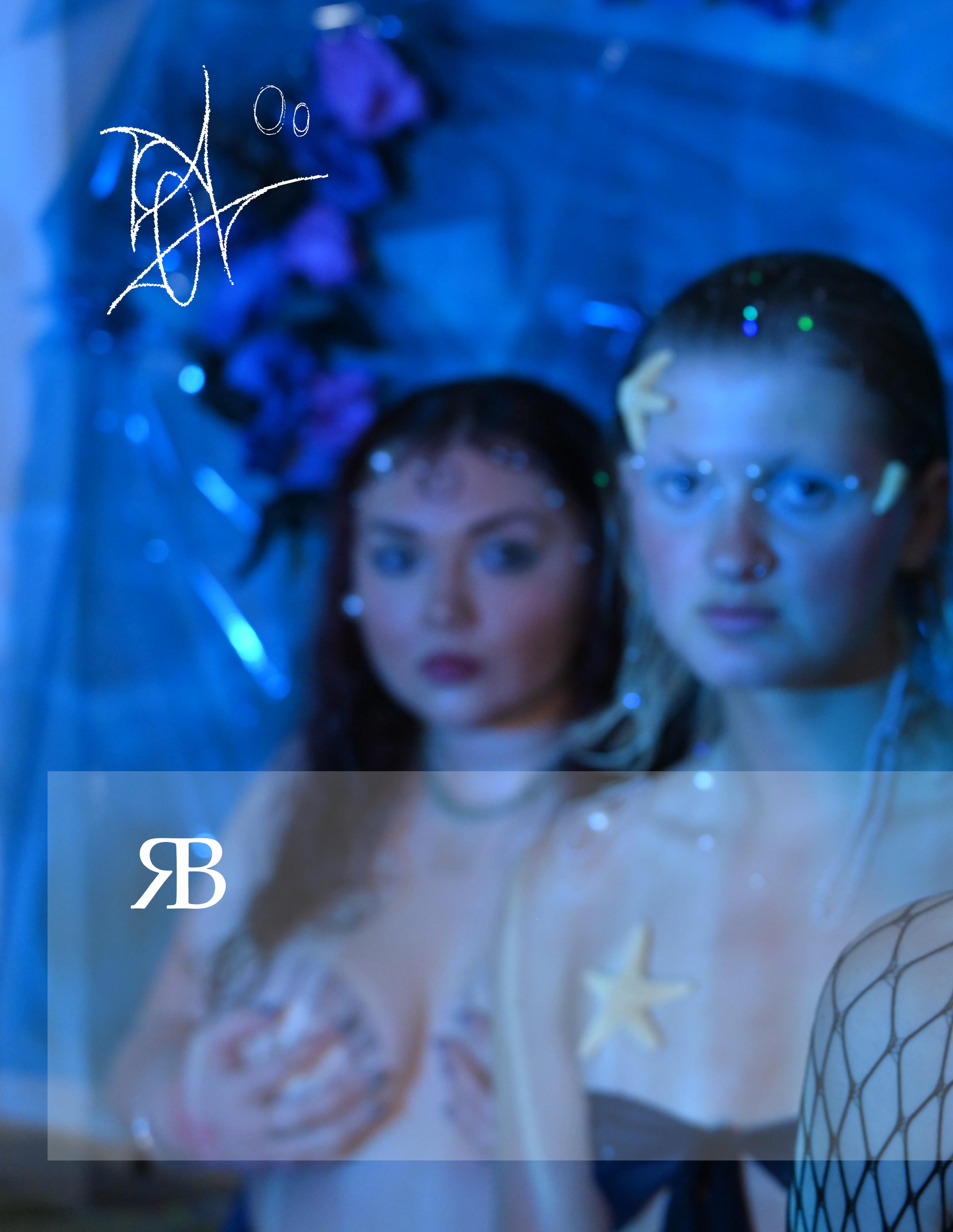
 Photo by Camron White
Photo by Camron White
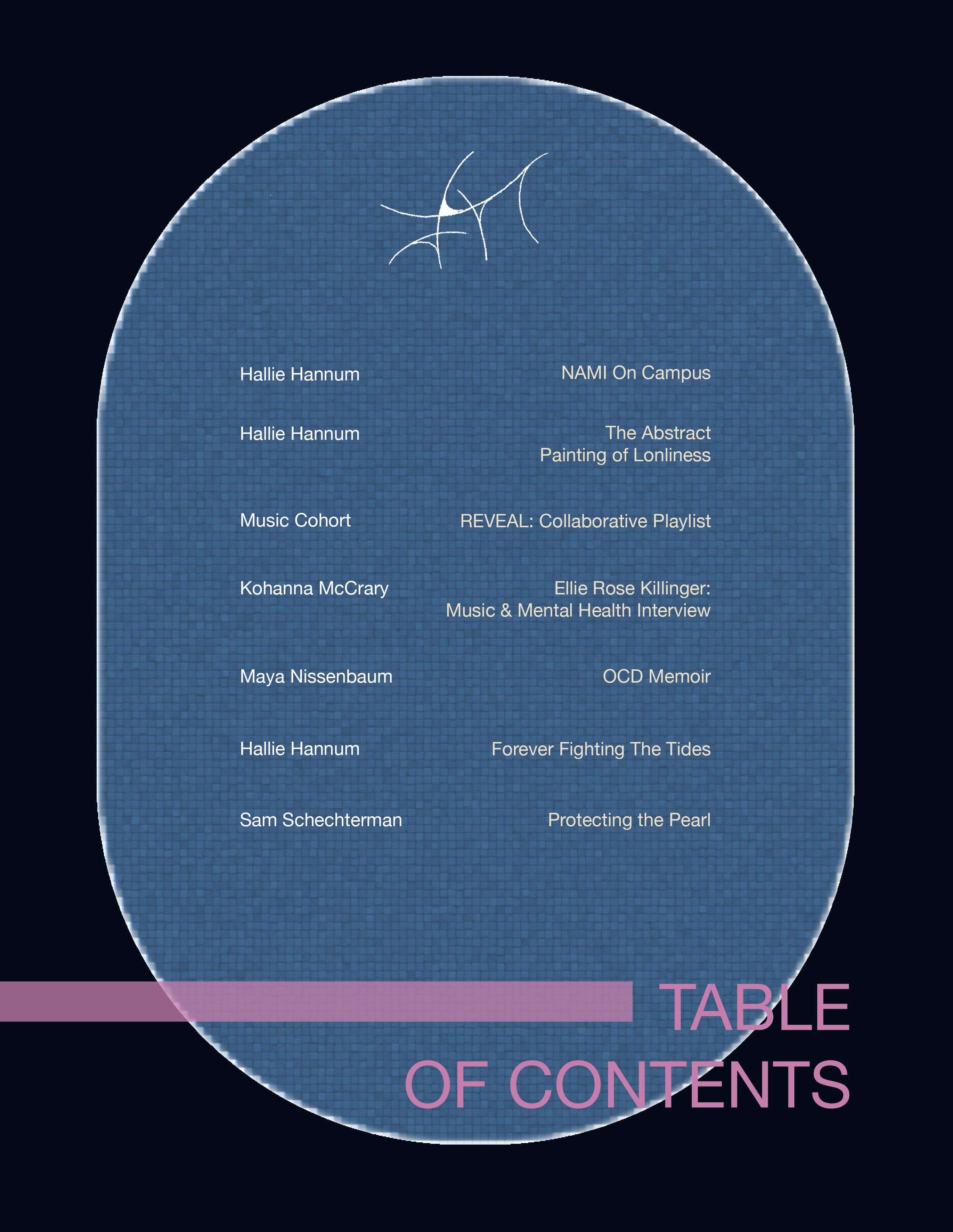
 Photo by Camron White
Photo by Camron White

 Photo by Andrew Batilo
Photo by Andrew Batilo
NAMI On Campus
NAMI (The National Alliance on Mental Illness) On Campus is a club at CU Boulder under the Boulder County branch of the nationwide NAMI organization. NAMI’s efforts are countrywide in advocating for awareness, education, and support towards mental health and those who may experience it. The organization has numerous local and statewide branches across the US.
NAMI’s model is different from other organizations in that their advocates and leaders are not trained professionals in mental health, but rather people who have lived experiences with the very mental health conditions they are bringing awareness to. They are driven to uplift the voices of those with personal experiences rather than psychologists or professionals in the field who may not have personal experiences with mental health conditions. NAMI Boulder County is a Boulder-local branch, and NAMI On Campus is a university club that receives funding through them.
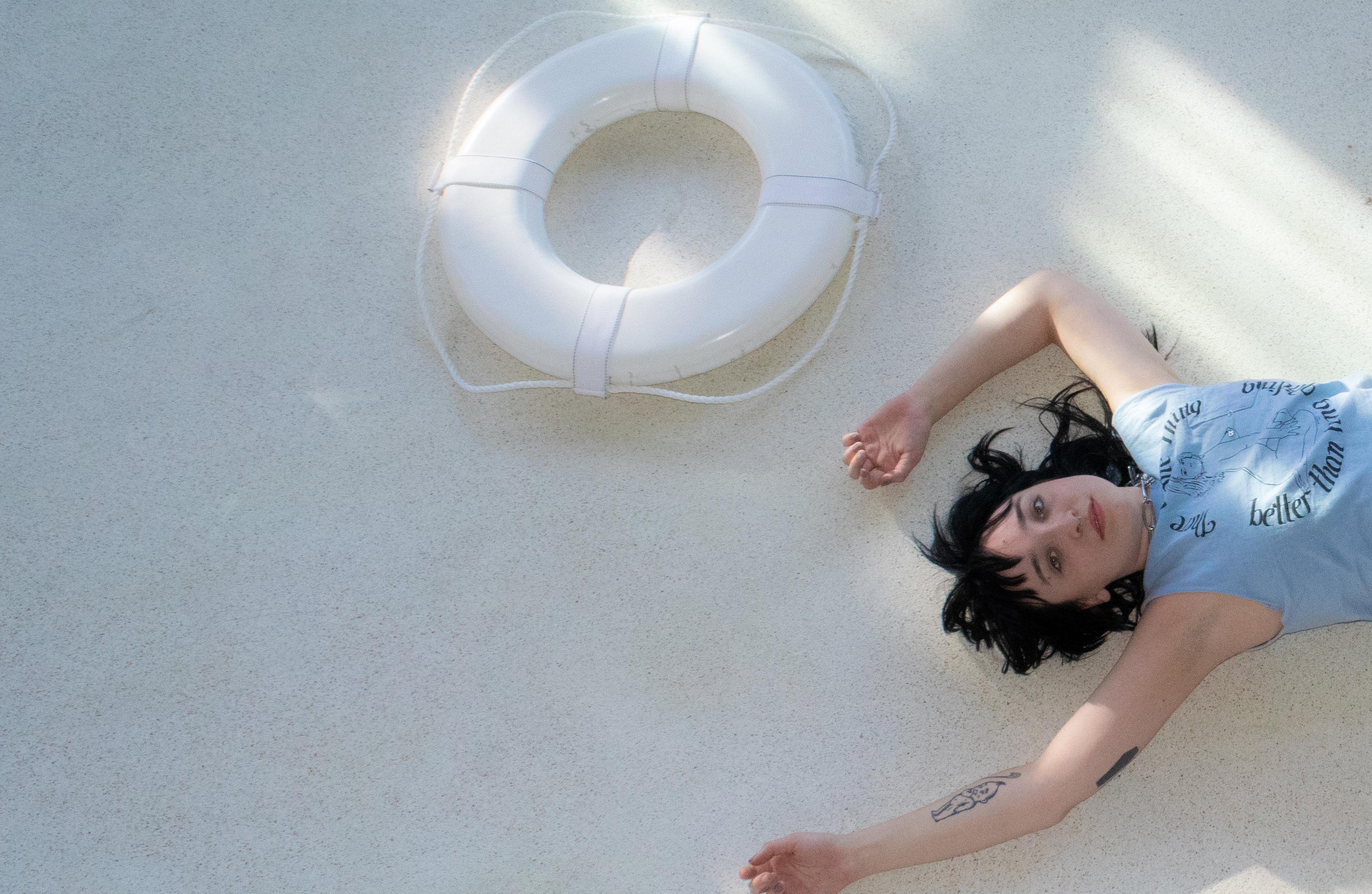
NAMI On Campus (at CU Boulder) is a student-run club that follows the same efforts as the nationwide organization which is advocating for, creating support, and education for those
with mental health issues and/or their loved ones. They will periodically hold talks on mental health where they invite speakers, often from the higher-up branches of the organization and other speakers not originally affiliated with NAMI. They recently held a talk, Mental Health 101, with a speaker from NAMI Boulder County. The club wishes to bring campuswide awareness to the common mental health issues that the majority of university populations deal with and aid in the ongoing efforts towards destigmatizing those same issues. Specifically, they wish to bring those efforts towards depression, anxiety, and ADHD as they are most common among university students.
The younger branches are also dedicating themselves to spreading their awareness and advocacy through social media platforms, such as TikTok. NAMI On Campus has its own TikTok page: @namioncampusboulder. By using these platforms, the younger members hope to bring an even wider outreach to those who may benefit from NAMI. NAMI is working to raise awareness and continue destigmatizing mental health and its surrounding issues by providing necessary information on mental health.
Hallie Hannum
NAMI (National Alliance on Mental Illness)

Nationwide organization across the US
Has smaller statewide and local branches
Advocacy, awareness, education, and support
Lived-experience driven model; leaders more experienced through personal experiences of mental health than trained professionals in mental health or psychology
NAMI Boulder County
Local branch of NAMI in the city of Boulder
Funds NAMI On Campus
Advocacy, awareness, education, and support
Speaks at talks from NAMI On Campus
NAMI On Campus (at CU Boulder)
CU Boulder club
Student-run club for mental health
Branch under NAMI Boulder County
Advocacy, awareness, education, support, and destigmatization
Destigmatize through education
Facilitate thoughtful discussion around mental health
Periodically holds talks with guests from larger NAMI branches
Contacts:
Zack Lineaweaver, President namiboulder@colorado.edu
Bailey Paschal, Vice-President bailey.paschal@colorado.edu
Dr. Jennifer Schwartz, Faculty Advisor jennifer.schwartz@colorado.edu
Websites

NAMI Website: Home | NAMI: National Alliance on Mental Illness
Vision, Mission, and Values: What We Do |
NAMI: National Alliance on Mental Illness
Boulder County Branch: Find Your Local NAMI
| NAMI: National Alliance on Mental Illness
NAMI On Campus Club page (on CU

Organizations): Organization Details | Presence
Discord Server: https://discord.com/ invite/HNdTG896BD
Photos by Izzy Holsman
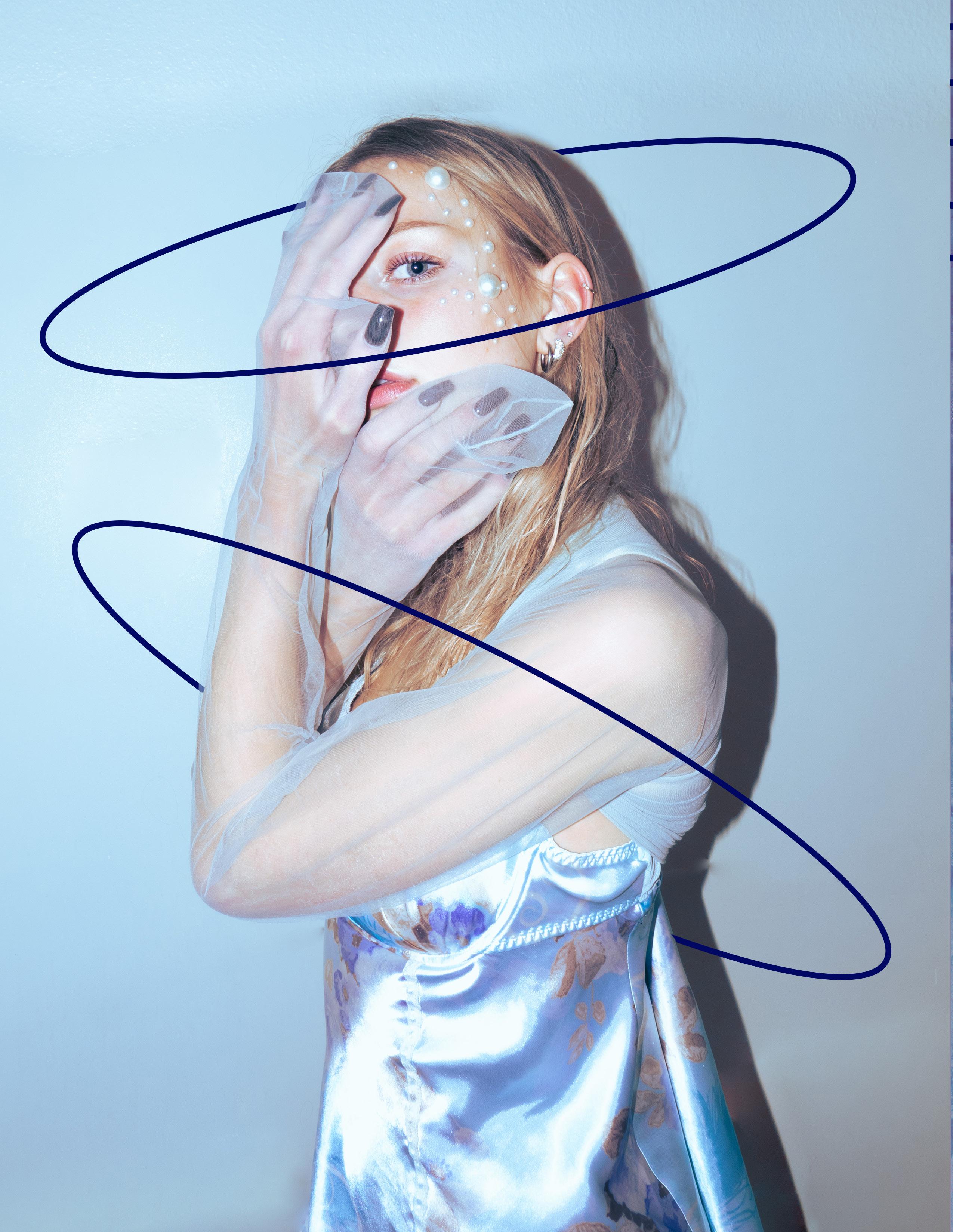 Photo by Tylyn King
Photo by Tylyn King
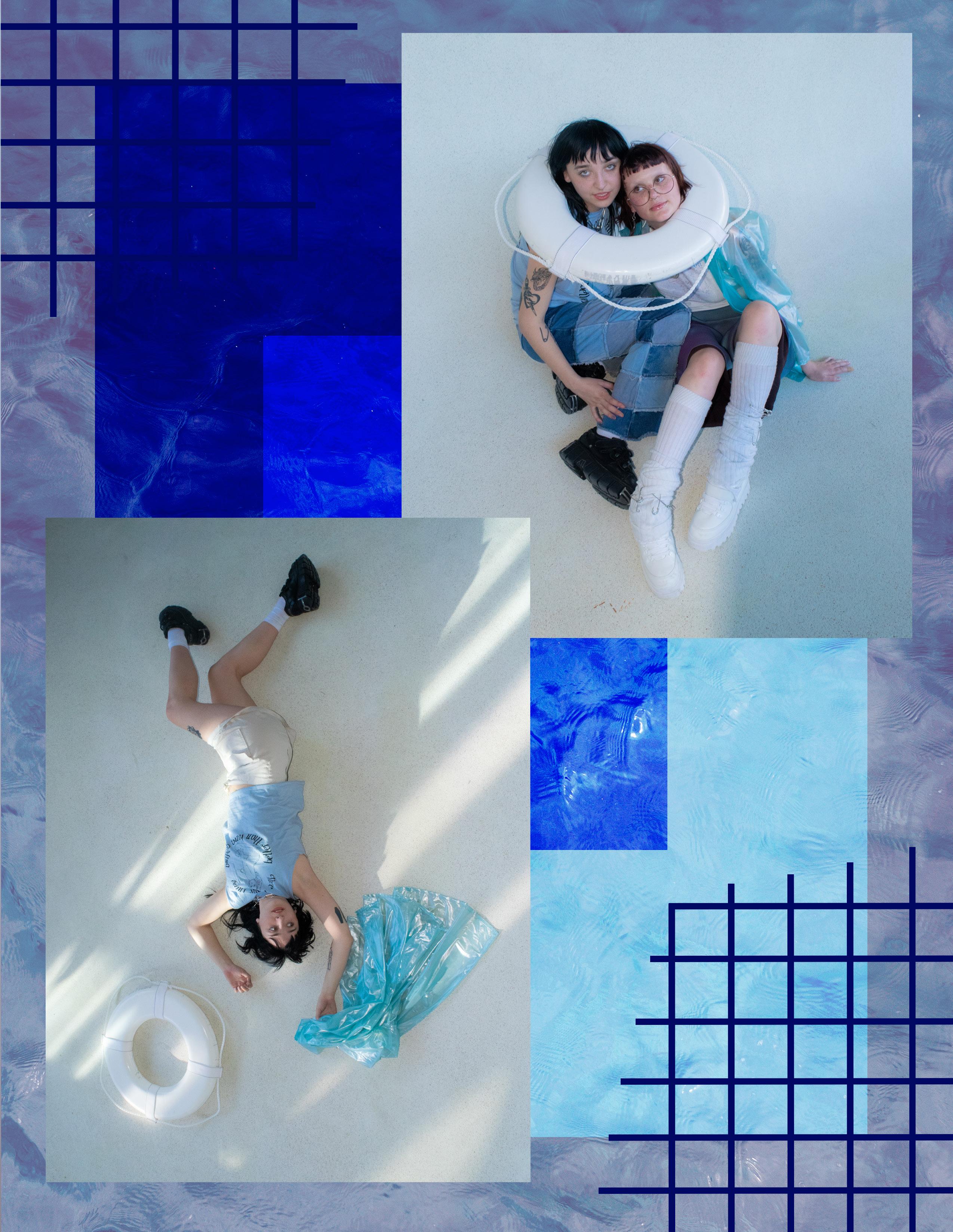 Photos by Izzy Holsman
Photos by Izzy Holsman
The Abstract Painting of Loneliness
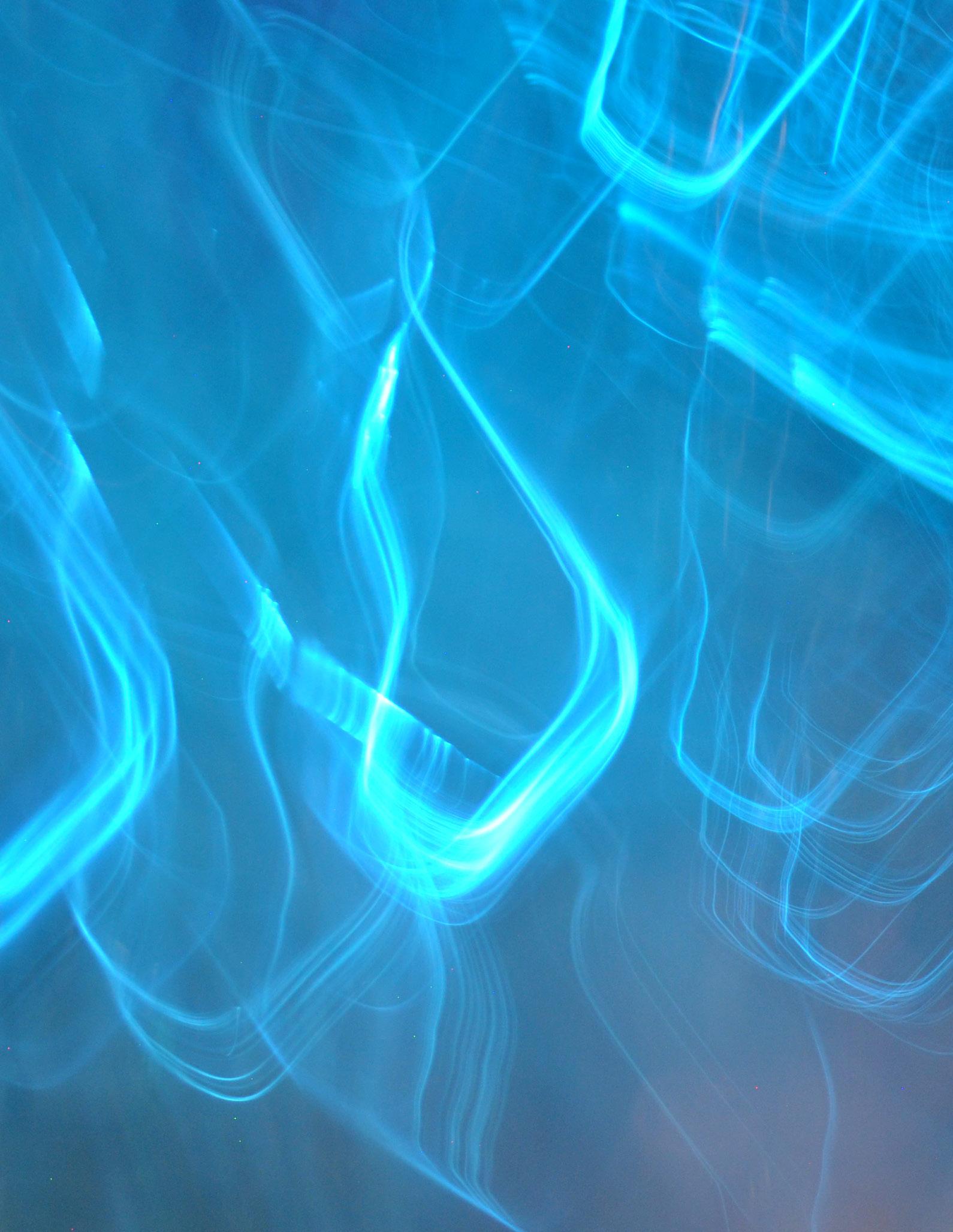 Hallie Hannum
Hallie Hannum
Ithink of loneliness as an abstract painting. There are so many colors and lines and details and feelings. Abstract paintings are all different: some are detailed in the ways of intricate lines or tiny dots, some are not so detailed with just a few strokes across a canvas, some are in the middle sitting balanced on a wall between detail and vastness. Abstract paintings can often be viewed as somewhat chaotic in terms of their overview and vision. That’s what loneliness feels like. There is a difference between being alone and being lonely; however, it walks a very fine line. Being alone can often be comforting in times when you need it, after a long day, or when you’re tired. Being lonely is an array of colors across the canvas of your brain. Some are bright, some are dark, some are detailed, some are not, and sometimes there are not any colors at all: there are just scratched lines. Abstract is defined as existing in thought or as an idea but not having a physical or concrete existence. Some think of the metaphysical, conceptual, theoretical, and so on.
Loneliness isn’t a physical abstract, it’s abstract on your mind, on your heart, on your being. Loneliness is deep and rooted and messy and confusing, just like an abstract painting can be. We all are lonely at some point in our lives, some longer than others, some harder than others, and unfortunately, some never fully make it through. Loneliness feels like walking through a forest on a rainy, foggy day where you can’t quite see where you’re going but you’re just trying to make it through, come out on the other
side into the sunlight, find that new dawn; that horizon. But you can’t. At least not for a while. You just simply wander, searching and searching for the next step, the next clue, the next hope. Abstract paintings are meant to make you feel something, and loneliness is feeling everything and nothing at all at the same time. Loneliness comes in so many different colors. It’s numb, sad, nostalgic, comfortable, and angry. It’s bitterness, resentment, acceptance, reassurance, disappointment, and confusion. It’s being in a room overflowing with people, yet being the only soul there and having to live through it every minute of every day. It’s sitting by while everyone continues to live their lives whether you’re in it or not, and it doesn’t matter if you’re in their life because they don’t notice anyways. It’s watching friends around you make plans sitting not even a few feet away but still not at all thinking to even give an invite. It’s watching everyone around have fun and make memories and be happy and enjoy each other while you’re still waiting for your turn because, God forbid, you try to interrupt or put yourself in because that feels even worse like you don’t belong or weren’t wanted. It’s sitting in your room silently on the floor, crying, wishing to God that this would just end, for God’s sake please just let it end.
It’s being tired.
It’s being numb. It’s being trapped. It’s an abstract painting of loneliness.
numb.trapped.loneliness.tired.numb.trapped.loneliness.tired.numb.trapped.loneliness.tired.numb.trapped.loneliness.tired.
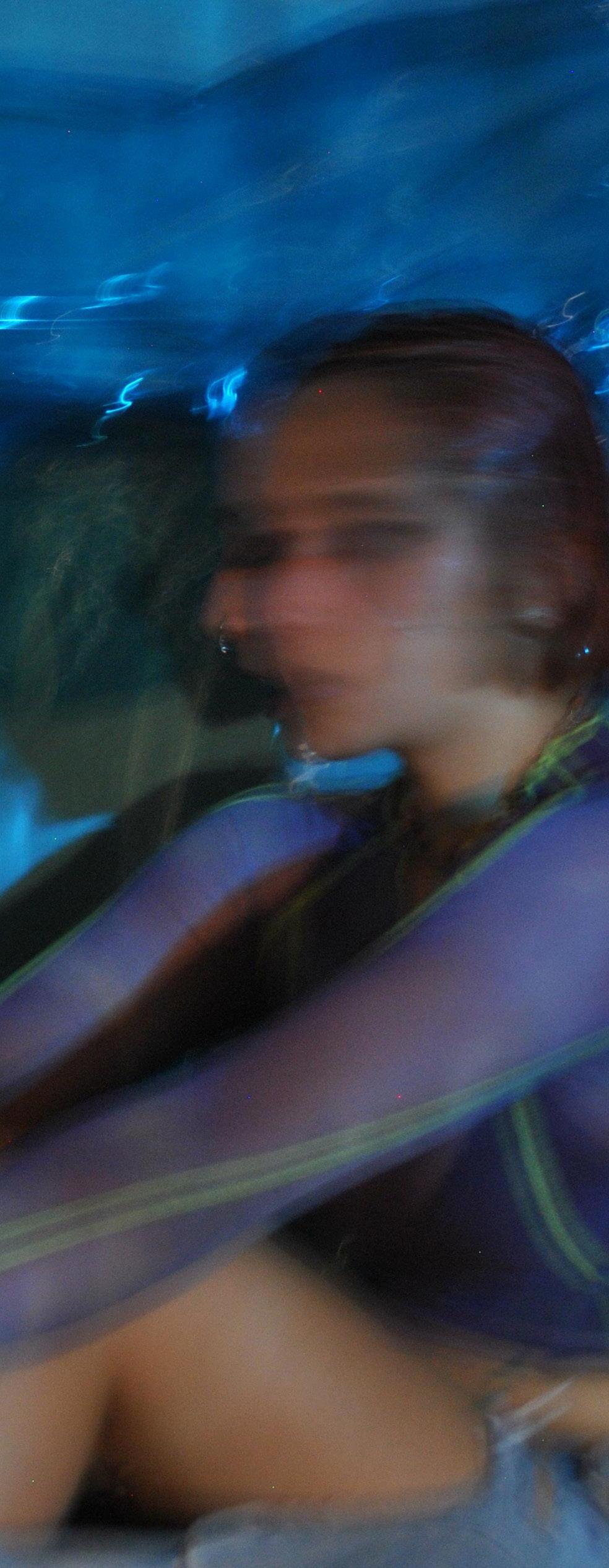

 Photos by Katie O’Leary
Photos by Katie O’Leary
 Photos by Camron White
Photos by Camron White
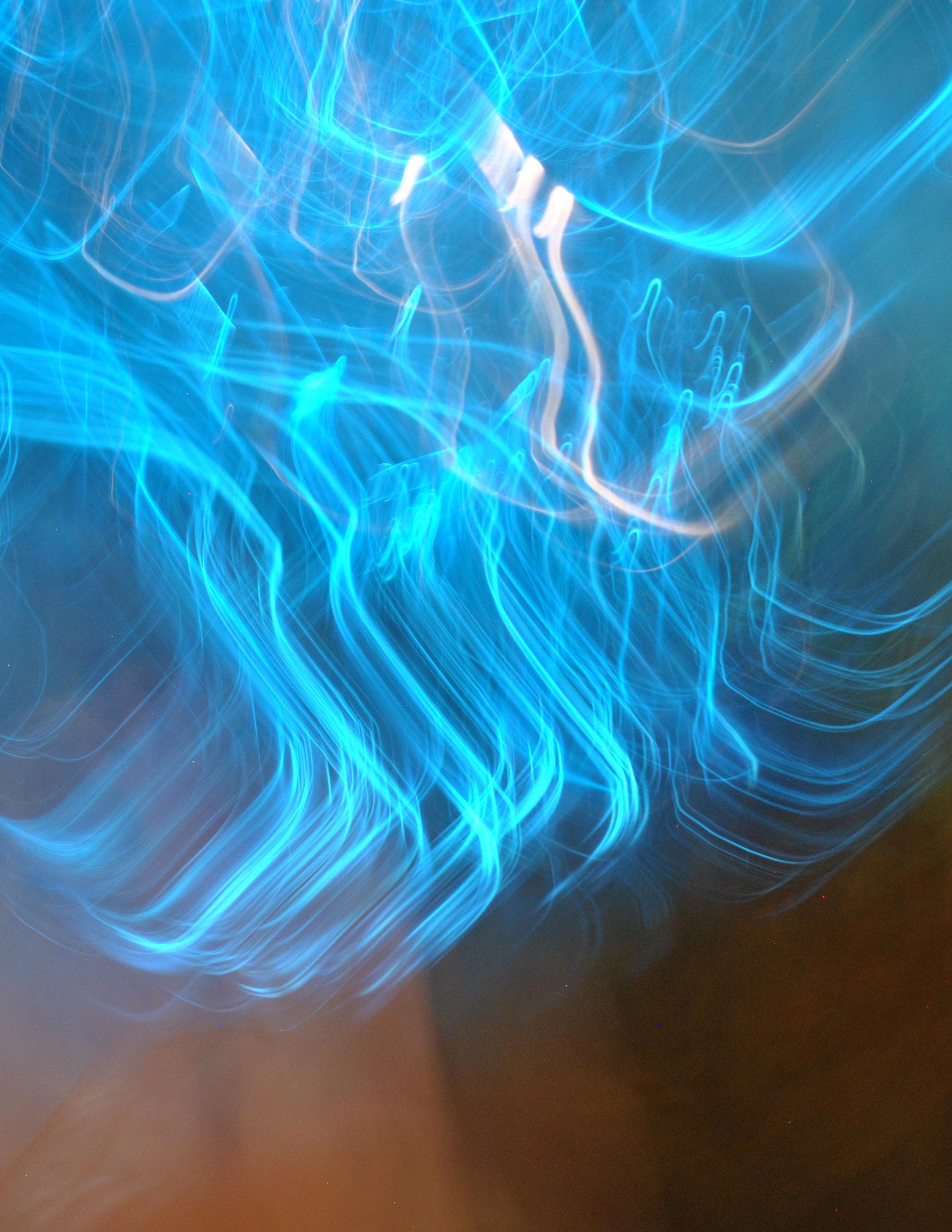
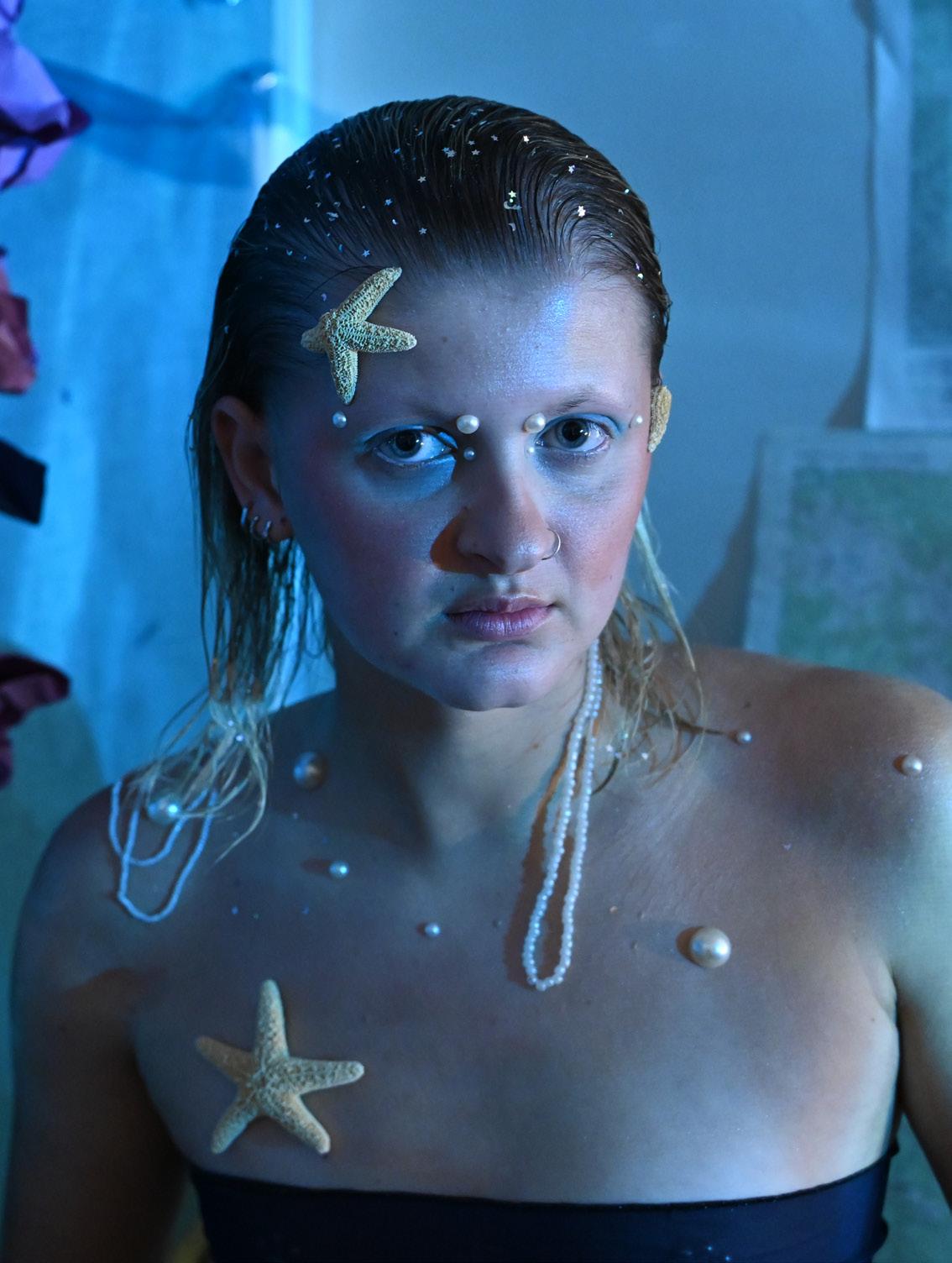



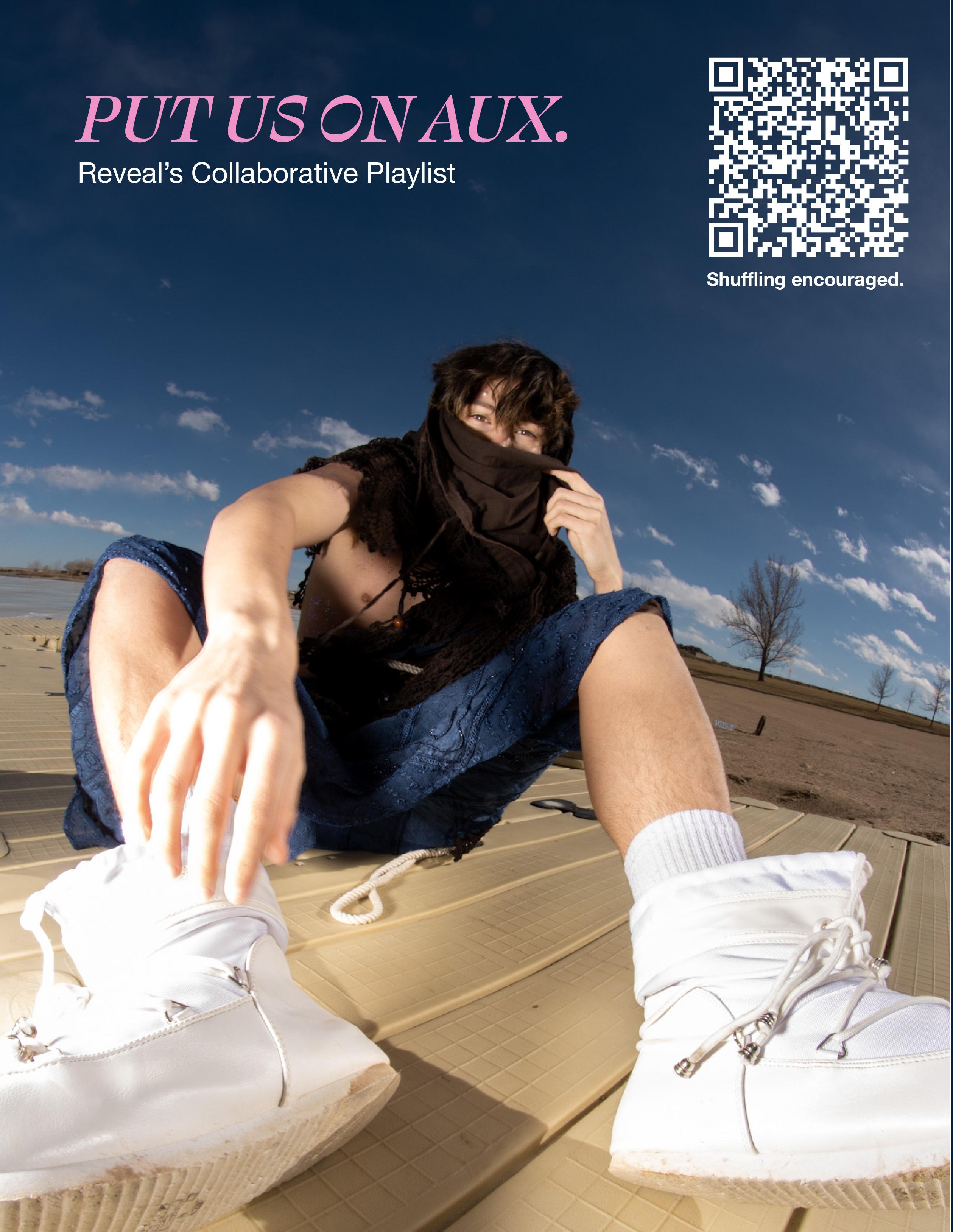 Photos by Kyle Kim
Photos by Kyle Kim
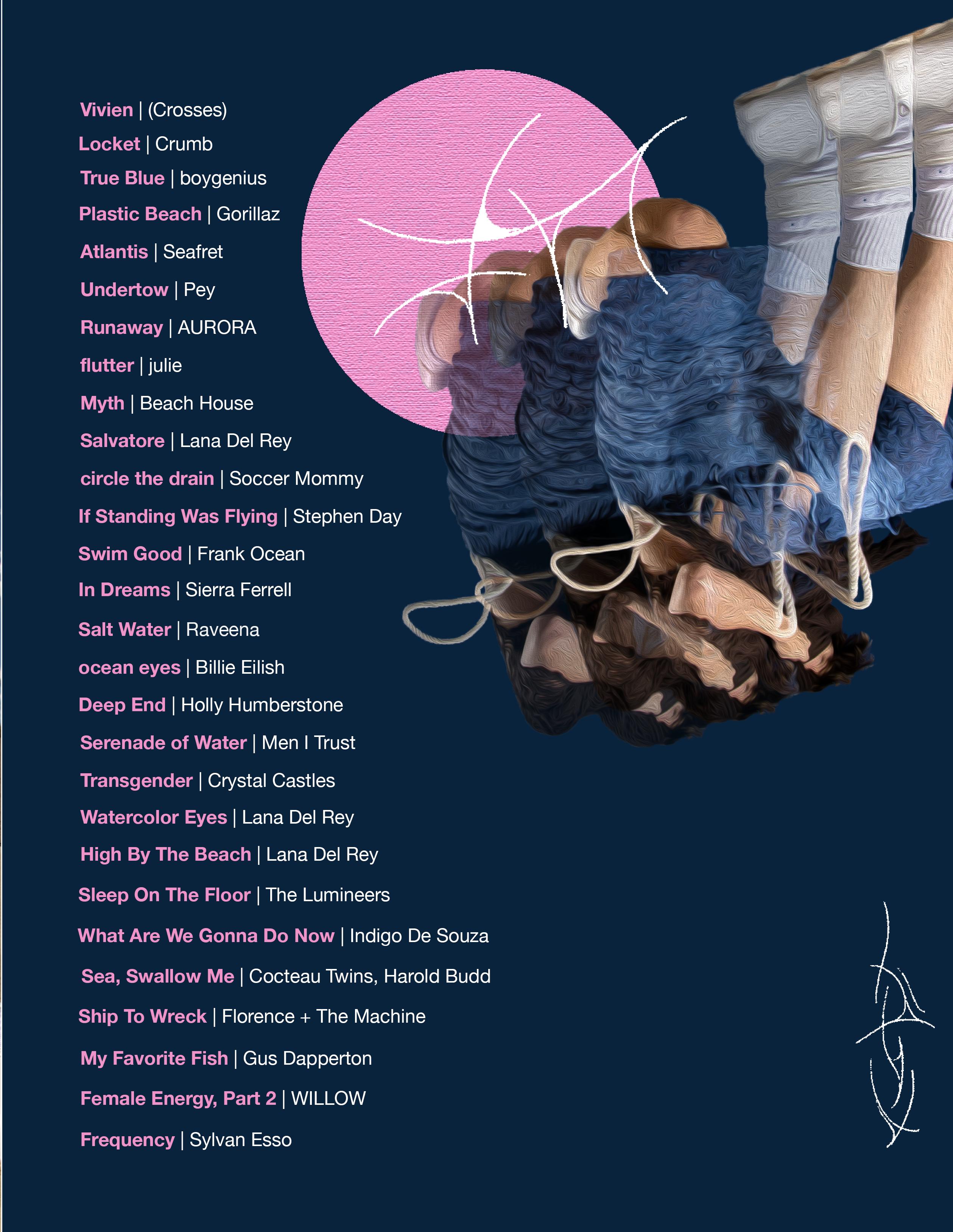

 Photos by Sebastian Arnavat
Kohanna McCrary
Photos by Sebastian Arnavat
Kohanna McCrary
Ellie Rose’s story is one of a true musician: a story I’ve always wanted to tell, and one that deserves to be shared. Her narrative highlights the way that music and positive mental health go hand in hand with one another.
REVEAL aims to bring awareness to mental health for all affected groups, and musicians have a particularly special relationship.
Ellie Rose Killinger found her love for music at a very young age. Inspired by her father’s love for piano, she listened to him play melodies by artists such as Ray Charles, Frank Sinatra, and Ben Crosby throughout the house during her childhood. At five years old, she begged her mom for violin lessons, became classically trained, and furthered her musical education in classical piano at age six. Later in her musical career, Ellie Rose found her niche and focused on songwriting. Music for Ellie was not just a hobby, but a tool. She began volunteering at, A Place to Be, an amazing company dedicated to music
therapy for individuals in need of mental health support. Here, Ellie realized that music was a way for her to connect with others. “That’s when I started opening up about my music, I wasn’t scared to share it anymore,” Rose shared. She continued, “It was a pivotal moment. Growing up a relatively shy kid, I lost a lot of social anxiety I had dealt with for years when this happened. I’ll make conversations with people in the drivethrough, the cashier at the grocery store - I became super outgoing,” Ellie Rose shared.
Ellie began booking gigs, beginning at her local coffeehouse, Common Grounds, and further attained leadership roles in her high school’s musical theater. “Then I got diagnosed with Neuro-Psychiatric Lupus,” said Ellie Rose. This form of Lupus is a more severe strain, attacking the central nervous system. “I started chemotherapy in February of 2021 and when Covid-19 hit in March, I was on lockdown. I couldn’t leave the house, my family couldn’t

leave, and we had to be incredibly careful. I felt isolated” Ellie stated, remembering this time. Music was not just a tool for connection anymore; it was a tool to curate and sustain positive mental health. “I turned to my music, it was a way for me to process what was happening, and it became a therapeutic outlet,” Ellie Rose shared. “As I started to heal mentally I got into a more accepting place when facing my situation. I started using my music to connect with others again while using it to connect with myself as well,” stated Ellie Rose. She began teaching music lessons at local pre-schools. She would use Zoom to join the preschool classes and play guitar while they would all sing. Together, they were developing creative and healthy outlets.
Throughout this growth, Ellie Rose kept an unwavering commitment to education, leading her to attend Bryn Mawr College, part of the esteemed Seven Sisters group. These historically women’s colleges were established to provide
the same caliber of education as prestigious Ivy League Institutions. Ellie Rose has released four singles and a successful EP including “Delaney’s Song” dedicated to her best friend. Delaney passed away from pediatric cancer, and Ellie Rose performs each year at Curefest at the National Mall with hopes of raising awareness and funding for pediatric cancer. Ellie Rose also began her own non-profit, Ellie Rose Strong, which is dedicated to donating 100% of profits, either to Lupus research organizations working to find a cure or to others who have chronic illnesses.
Ellie Rose Killinger, an incredible musician, childhood friend, creative soul, and inspiration to all, is a messenger of the unity between music and positive mental health.

 Photo by Krister Killinger
Photo by Krister Killinger
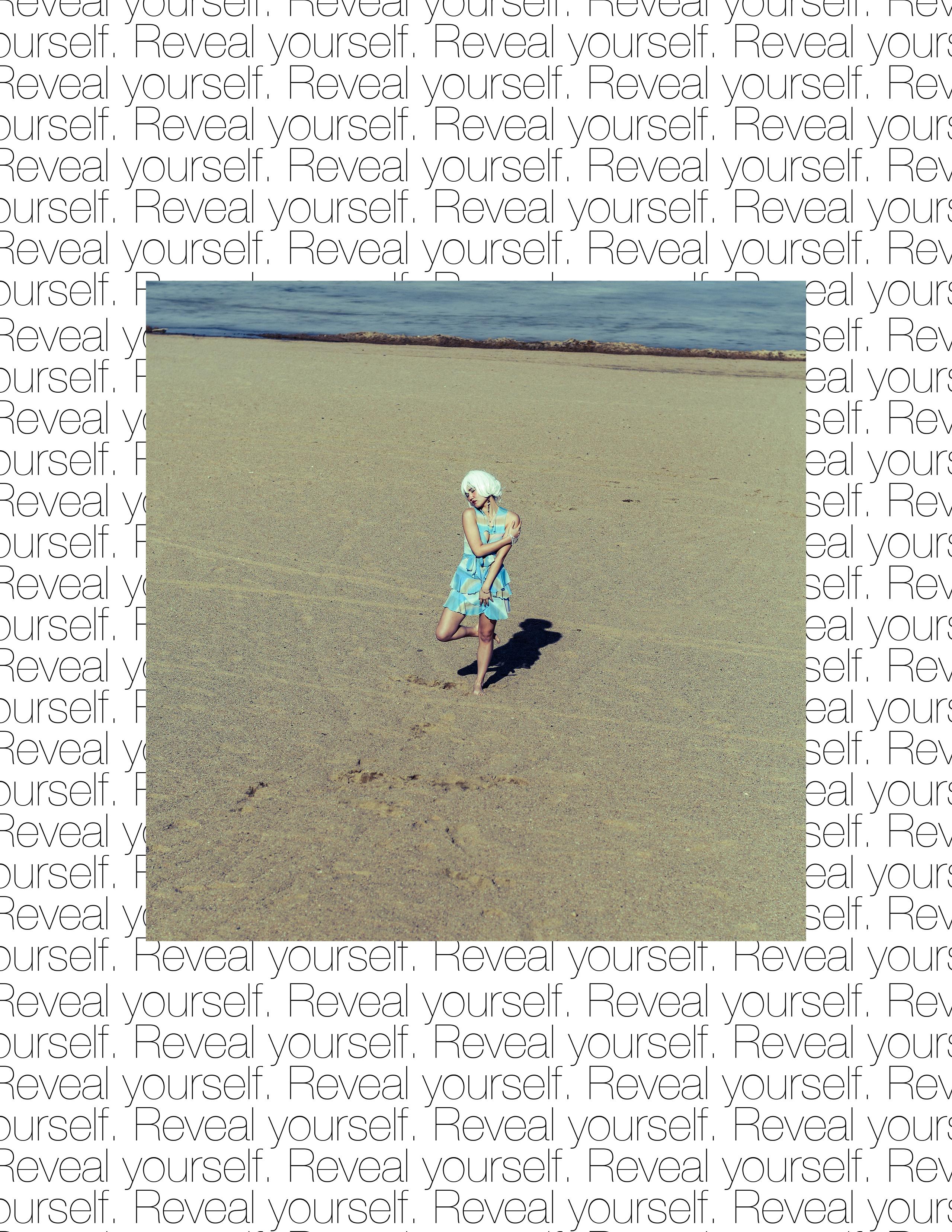
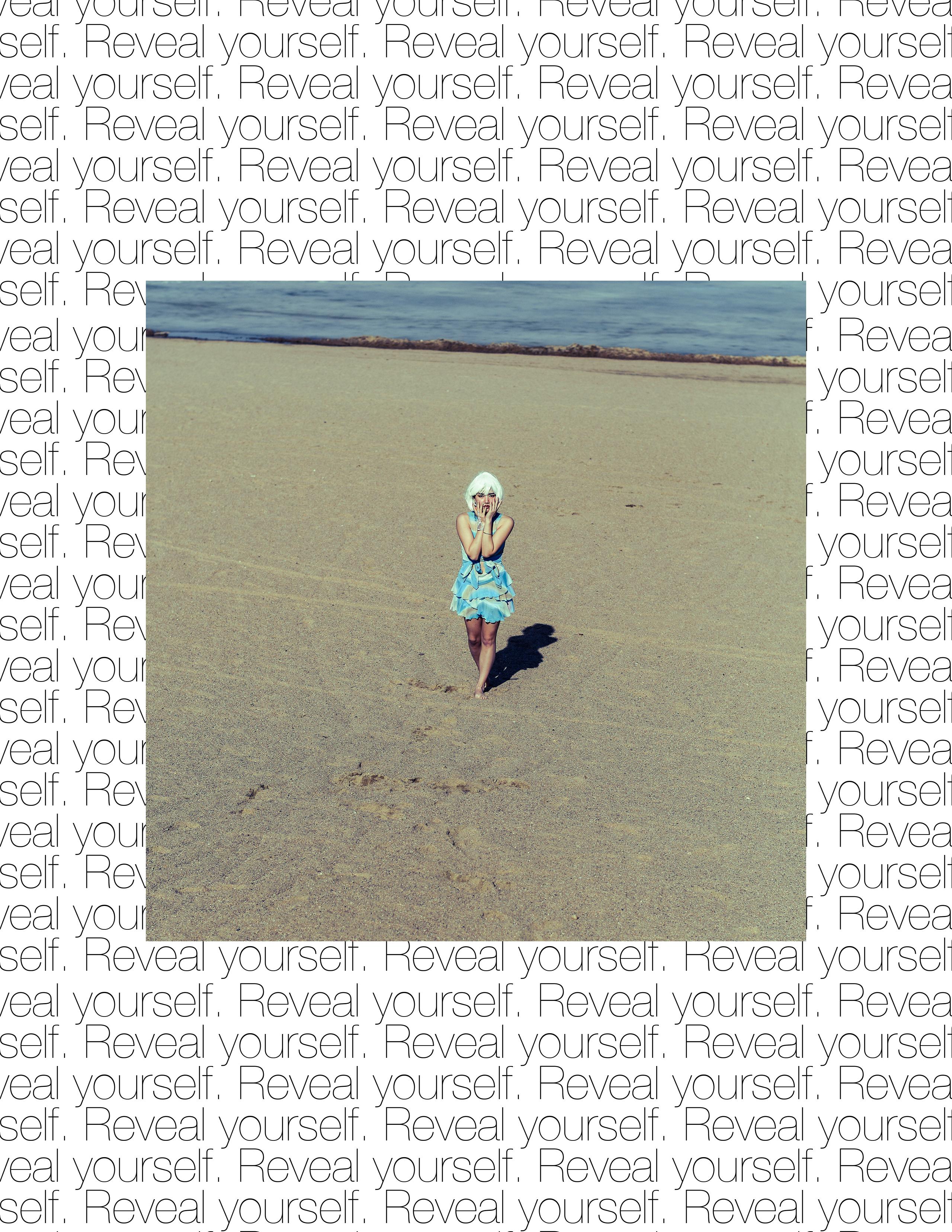 Photos by Sebastian Arnavat
Photos by Sebastian Arnavat
The “She” in My Head
A Narrative on the OCD Experience
Maya Nissenbaum
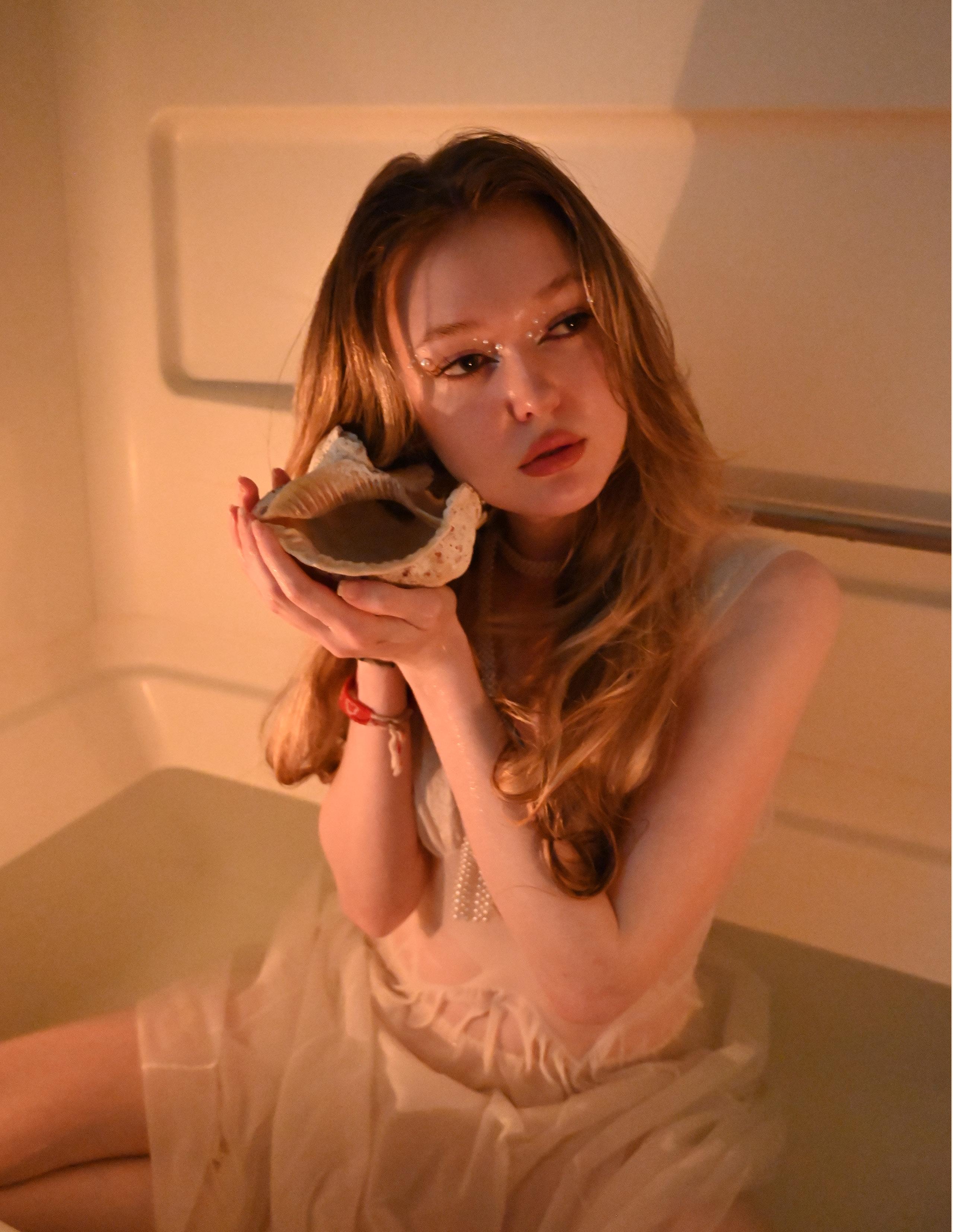
Irememberthe white lights, the smell of disinfectant and latex, the dust of my pencil and blisters all over my hand from test after test; and the tears soaked up on my shirt from hours of sitting in front of this strange woman who kept questioning me, I was 8. I was a child when I was told something had to be wrong with me. As I tugged onto my mom’s leg, hid in her shadow, and begged to leave, I only remember hearing the words, “something else is wrong with her.” I always wondered what this meant, but my mother never spoke of it again. Yet, in all my ignorance, the words something is wrong with her raged in my head, sending me into a spiral that only became more consuming and more shameful.
I always imagined her to be tall, slim, and with hair slicked back into a tight bun, not a strand out of place. She had glasses, a tightly buttoned up shirt, and the stature and stare that could cripple anyone. She was powerful, too powerful. You knew you stood no chance against her. She followed you around everywhere you went and her voice, yelling and screaming, drowned out the sounds of life. It is debilitating.
I first heard her when I was 10, although I am sure she had been waiting to show her face long before. She yelled at me and threatened that if I did not make it up the dark stairs in less than ten seconds, something or someone would come and get me and hurt me. So the second the room went dark, the countdown in my head began. She yelled, “you better run, 10…9…8…7…6…5….” I always made it up in 5, just in case. However silly it may sound, it felt so real, almost like I could feel the dark shadow brush my neck with a cold breeze if I was too slow. She convinced me it was real. She convinced me it was normal to feel this way and to be this scared. She only got more insistent from then on.
Photo by Camron White
At 12, she warned me that if I did not hold on to a picture of my parents and think about them for their entire plane ride away for the weekend, wishing them safety every step of the way, surely they would get into a horrific plane crash. My thoughts would travel to the worst of places. She bombarded me with detailed images of the smoke seeping out of the failing engine and the look of fear and despair on my parent’s faces as they realized it was their last moments. She mimicked the yelling and screaming around them as they fell out of the sky. It was almost as if I was experiencing it for them, feeling every emotion, thought, and physical pain like it was real. “You know what the worst part is,” she would say, “it is all your fault.” It was my job to control all of this, and the guilt consumed me.
At 14, I couldn’t close my eyes in the shower for more than 15 seconds. If I did, she would creep in and say, “do you not wonder what horrible, gruesome danger is awaiting you if you do not open your eyes at 15?” Unsure what, it did not matter. Even if the soap seeped in and burned my eyes, I always opened my eyes at 15 and precisely at 15. Just barely managing to survive the shower, the worst part came after: The handles on my bathroom drawers. She said, “now be smart; you just showered, you better not get dirty again.” No matter what, no matter if my hands would peel and bleed from washing them, I could not touch a single handle, a single surface, or anything she convinced me was not contaminated with filth without immediately washing my hands after. My hands, cracking and breaking, would cry to me, begging for mercya breath of air, a moment to not be suffocated by soap scrubbing away at them. It did not matter, because she gave me a new lens; I could see the germs, the grime, and every molecule of dirt on every surface. It made faces at me, snickering and laughing at me. It knew I was scared of it, and so did she. It is dangerous, and it is because of these small moments of danger I was conditioned to understand danger was everywhere. At least that’s what she says, and I believe and do as she says; this is what I have learned.
At 17, she got loud, so loud. She would shriek and screech in my ear. It burned. I wanted to close my ears, curl up into a ball, and hide
from the world. She felt like an itch so deep in my skin that no claws could scrape it away. I became uncomfortable in my own skin, in my own head, and in my own blood. The very body that was once my home became a war zone. Her voice was married to every atom in my body, as though I could not exist without her, yet she is the reason I became so disconnected from existing.
I remember having dinner with my family. It was an ordinary night; everyone talked, laughed, and enjoyed each other’s company. I could not. I could not enjoy the people I love the most because she was sitting next to me. She said, “have you noticed how many times your brother has breathed in the last minute? You must start counting.” I would start with “1…2….3… wait, but how many have I missed? When would I even start? Am I breathing?” She would smirk at me and scarily object, “are you sure there’s even air to breathe in the room right now?” The spiral began. I started counting my own breathing, yet suddenly, I couldn’t seem to. My chest got tight, my throat closed up, and the air felt thin, almost nonexistent. She would start to panic, and of course, so would I. It was as if she cultivated a tornado of thoughts and concerns. It lifted me out of my chair, suspending me in the air, punching me, and tossing me around like a doll. She screamed in fear and confusion, “How do they all look fine? Do they not notice that there is no air? Maybe it’s just us? No, it can’t just be us. Oh no. They can definitely tell something’s wrong. Quick, act normal.” “Maya, are you okay?” they would ask with concern and love. Yet despite the warmth and genuine care they had for me, I got angry, so angry. She told me to. She said, “Maya, it’s better they hate you than think you’re crazy.” I agreed. In my frustration, finally being launched back to the ground after being battered and bruised, without the ability to understand or express myself yet, I would yell, lash out, and storm off. This happened many times.
At 19, life became a storm of impending doom and danger. Even in the stillest moments, she was not; she was chaos. Hazardous situations started to be everywhere. “Maya, if you choose to turn down the wrong street, that one decision means a car could run you over and kill you.”

Next came vivid imagery of being brutally run over by a speeding car, the sounds of the tires screeching in my ear, and the sensation of my entire body being crushed. I absolutely had to make the right choice. “Maya, do not dare use that sharp knife. You are going to cut a finger off.” Next came imagining the knife slicing through my finger, ripping through every cartilage and bone, and I could feel and see it. I put down the knife and became scared to even go near them. “Maya, have you made sure to plan out every hour, every minute, and every second of your day tomorrow? If you don’t, who knows what horrible things can happen if you are not prepared.” Next came hours of laying in bed, trying to figure out all the possible ways every moment of the next day could go, and I mean every possible way it could go. So, I planned, predicted, and ruminated for as long as it took. I had to finish this before I allowed myself to sleep. She was so persistent, and this only scratches the surface.
When anxiety turned into heat flashes, when fear turned into my reality, when ruminations turned into nausea, when overthinking turned into headaches, when worry turned into shaking, when thoughts turned into obsessions, and when obsessions turned into ritualistic compulsions that I had no control over, that is when I knew this was not normal.
Around turning 20, I realized I desperately needed help. This was its own battle, as she did not want to be silenced, and she made that very clear. Yet, I pursued on, in hopes of regaining
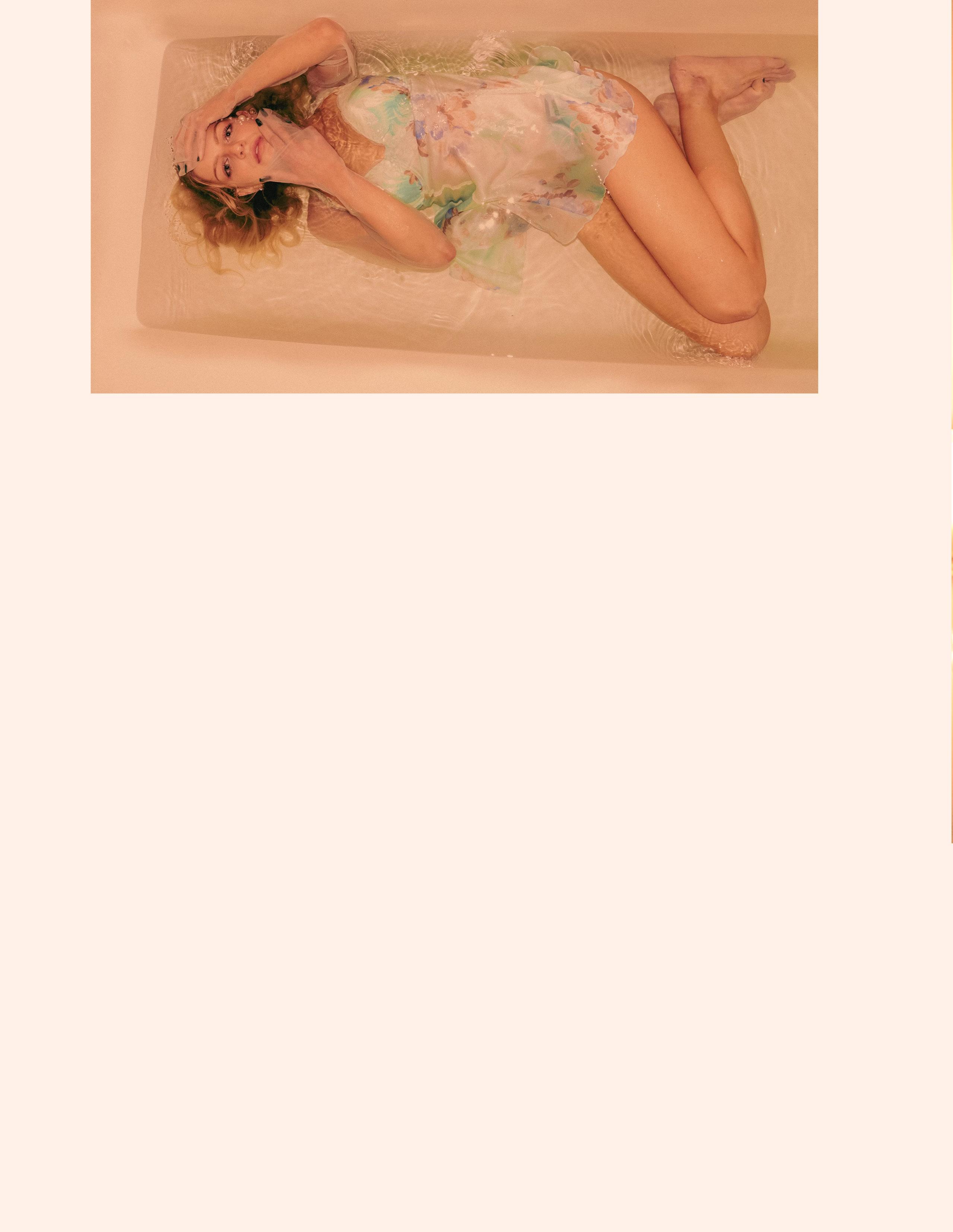
control of myself. The help I received came in the form of medication, which was a huge mental hurdle for me to cross, as it is for many. To accept defeat is what it felt like. Yet, to my surprise, it was the opposite-for the first time- I won.
I took a deep breath, and it was like I was tasting air for the first time. I could feel it fill every corner of my lungs, circulating through my veins, giving life back to my soul. I sat in silence with myself, genuine silence. I never knew the world could be so quiet, so empty. I found myself looking for her. I almost missed her. I was not used to living a life where she was so absent. However, I knew she was not gone. She is there somewhere and always will be. Yet, I took back autonomy over myself and finally felt free. I could be the gatekeeper to my own head again, choosing when I opened the gates to her and when I would not. It became that simple.
In much of my life before this, she became my biggest fear, the person I hated the most, yet the person I could not seem to get away from. She is a part of me, whether I like it or not, a massive part of me. I spent much of my life resenting her and trying to battle and fight her away. I would try to block my ears so I couldn’t hear her. I would be scared to tell people about her, so I isolated myself so that I did not need to. I lashed out at those I loved the most out of fear that they would not like her and how she clings desperately onto me at all times, whispering in my ear, sitting heavily on my shoulders, dragging me slowly and painfully down to the ground. I was so ashamed.
Photo by Tylyn King
Yet, as I have spent most of my life with her, I have learned to love her. I saw the beauty behind her cold eyes. I have learned she is the embodiment of all my strength and resilience. She is my superpower, a bright, shining light that only I own. She makes me feel like myself. Without her, I would be an empty shell of the person I have looked in the mirror and called “Maya” my entire life. I am no longer at war with her. Instead, she holds up the sword, and I hold up the shield, and we fight the war together, braving life’s challenges hand in hand. I accept her for who she is and all her flaws, and so does she with me. There is nothing wrong with me, and now both of us know that. Holding this hand I used to resent, gripping it so tight, yet knowing I could also let go, she looked down at me and smiled. For the first time, I noticed her dimples pressed so deeply into her cheek, the smile lines around her eyes, and the glistening of her pupils as she gazed with warmth so deeply into my being. She is beautiful.
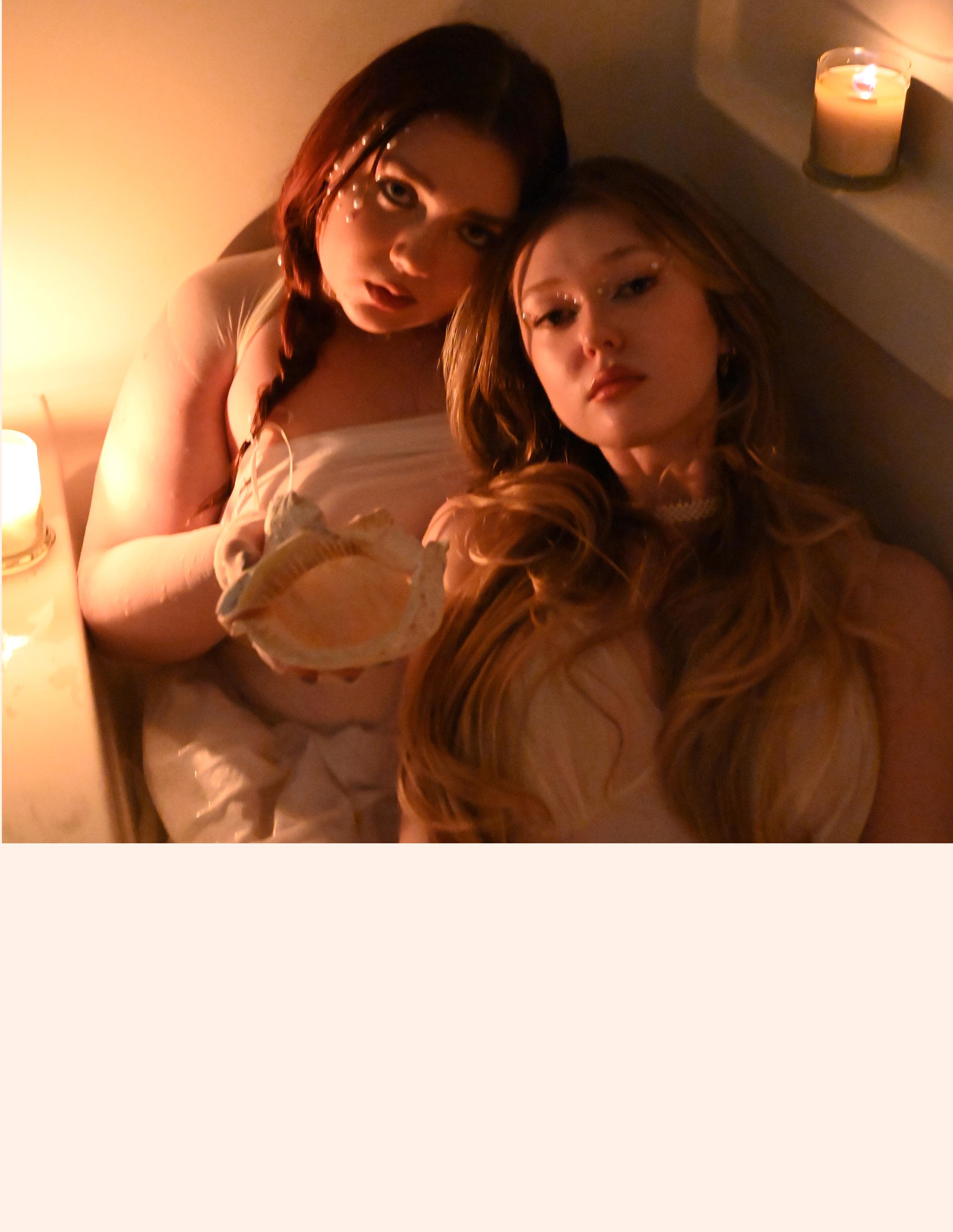 Photo by Camron White
Photo by Camron White

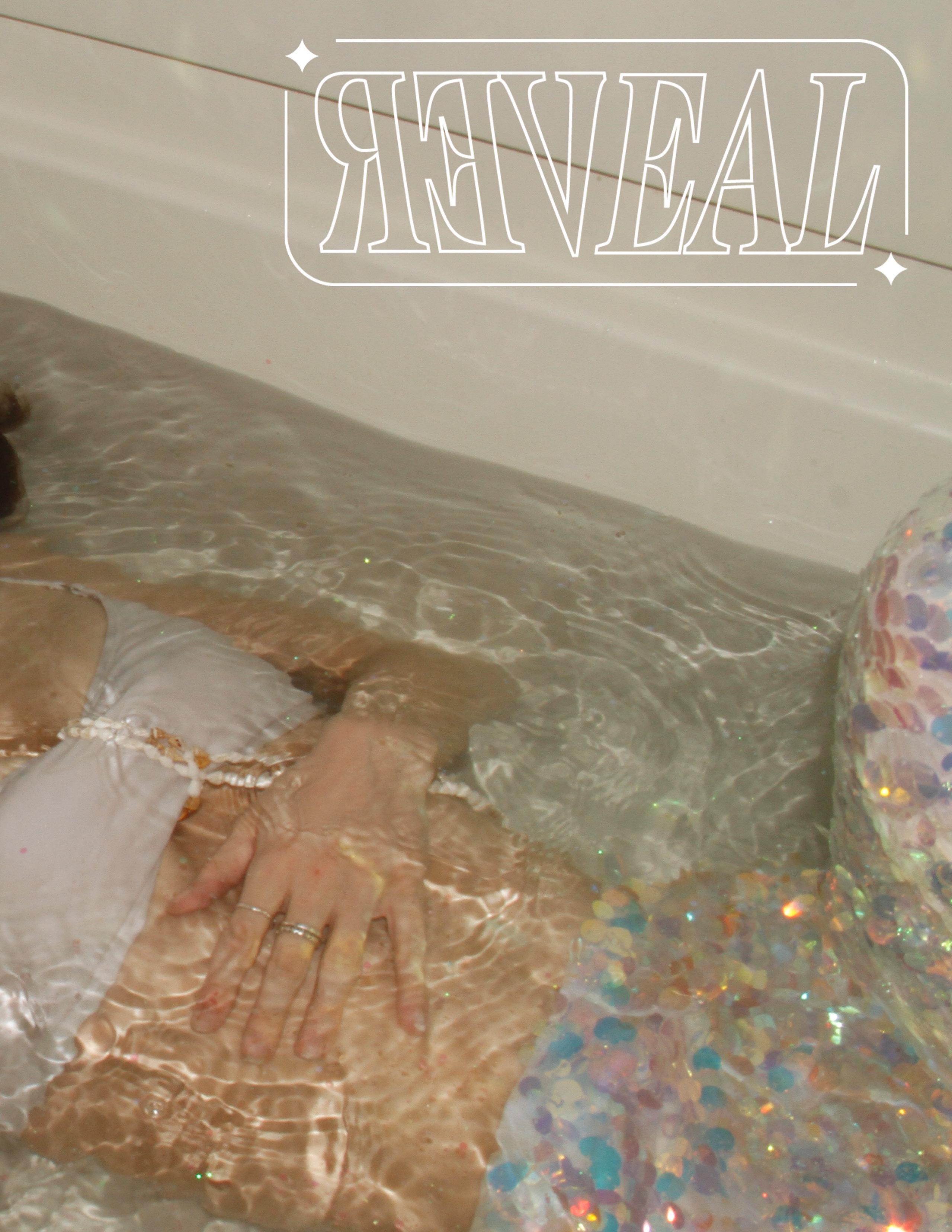 Photo by Camron White
Photo by Camron White

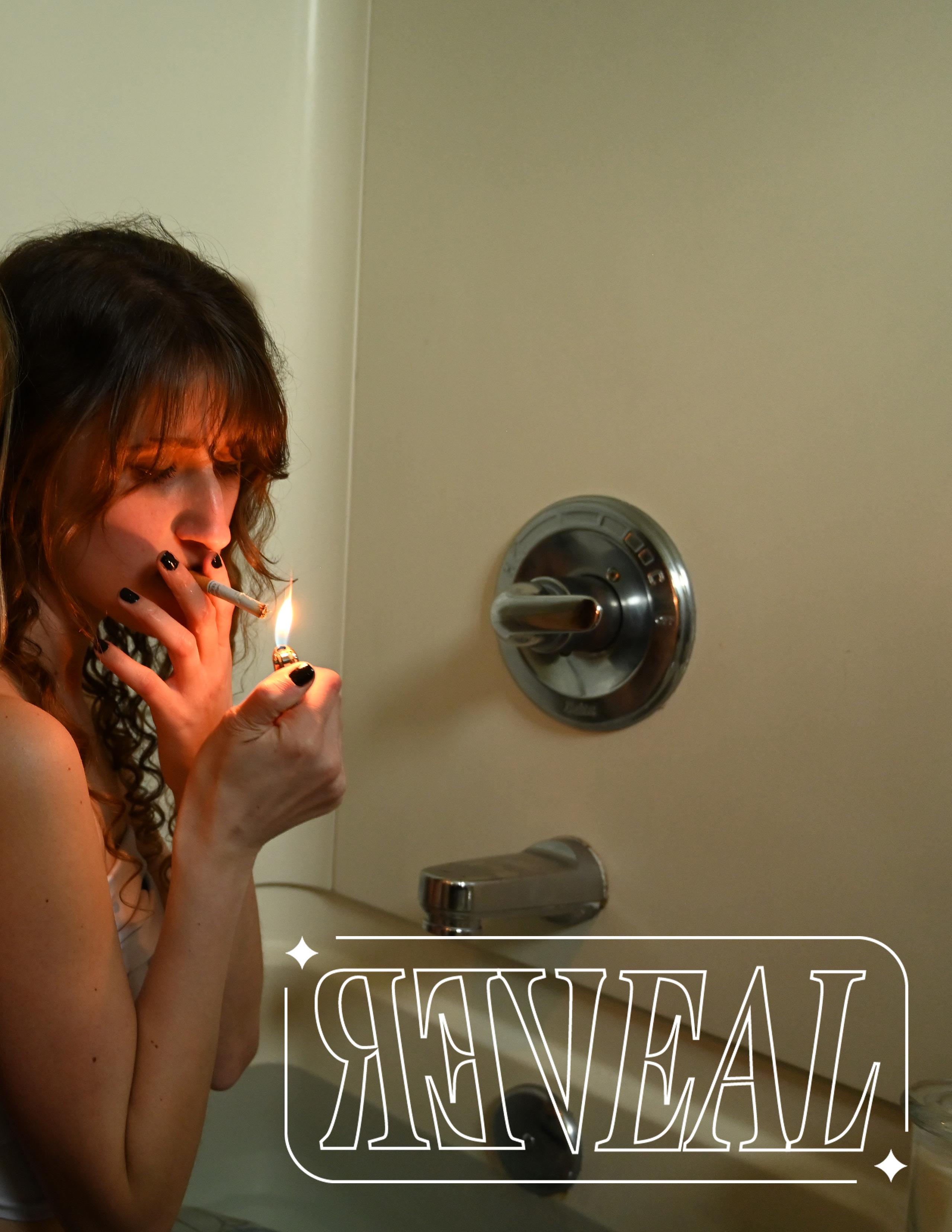 Photo by Camron White
Photo by Camron White
Forever Fighting the Tides
Hallie Hannum

We all have moments or periods of time in our lives when we feel as though we are trying to fight against the currents of daily life and times when we simply cannot keep our heads above water in order to perform through life the way everyone else is able to. Everyone has experiences like that. As a college student with ADHD, that feeling is my everyday struggle as I walk through life. I only got officially diagnosed with ADHD on April 18th, 2022, but I have dealt with the symptoms and challenges that come with the disability since I was a child.
As a kid, I was very energetic and hyperactive with my personality. I was often the “hyper kid”, but it was never a title that hurt, in fact, I often called myself “the hyper one.” I took an almost prideful outlook on being the energetic one of my friends since no one minded and even seemed to like that aspect of my character. I never had an issue with the way that I acted until my friends and I began growing older and reaching our late elementary school years and going into middle school. Middle school changed my mental health and outlook on myself.
I began to realize that many people didn’t appreciate the energy that I often brought to the table in my hyperactive way, and that cut deeply into me as a kid, especially from the people who used to
enjoy my energy previously. I began to be excluded from my group of friends, many of whom I had grown up with. I was quickly thrown into the vast, empty feeling of isolation that only grew worse as those years trudged on. I became extremely reserved during that time and had a very poor outlook on myself and the world of people around me. Something that I’m even still working on today. I went through a large depressive time that lasted up into my sophomore year of high school. As a person with ADHD, rejection is something that cuts extremely deeply, and often, I feel like a part of myself is simply not right and needs to be carved out in order to find people who will like me.
Rejection Sensitivity (RS) is a normal part of life; every person is going to feel that ache that comes with rejection from peers and others around them. But with ADHD, those feelings are more intensified compared to the average neurotypical person, and many people with ADHD experience Rejection Sensitive Dysphoria (RSD). Though RS and RSD have the same symptoms and effects, the main difference comes down to emotional dysregulation which ADHD causes a large struggle with. Emotional dysregulation is exactly what it sounds like, an inability to properly regulate the emotions that we experience. Although it is not an official symptom in diagnostic
criteria, about 70% of people with ADHD are estimated to experience and struggle with emotional dysregulation. Normally I handle emotions alright, but I don’t always handle them in a healthy way, more often than not, I simply push them to the side to deal with later, or sometimes not at all, instead of addressing them straight on. As well as this, comorbidity is also very common in ADHD; people often deal with other disorders such as depression, BPD, anxiety, and OCD just to name a few.
Social relationships can be challenging for people with ADHD since many of our traits can be complicated for people to understand or are things people don’t want to deal with such as impulsivity, hyperactivity, forgetfulness, and distractibility. My everyday thoughts when I’m with groups of peers in classes, clubs, and beyond often consist of constantly monitoring what I’m saying, how I’m acting, and what I’m doing to make sure I’m not acting in a way that would make people dislike me. This is also what’s called “masking.” I still struggle with the image of myself and what others think of me to the point where I don’t always let my true personality show or when I do, I immediately feel embarrassed or ashamed about whether someone has said anything or looked annoyed.
Personally, ADHD is extremely exhausting at times and has made me feel inferior to others in many aspects over the years: in academics, social life, and even in my own head. I’m always second-guessing myself, doubting my own abilities, and wondering if I’ll succeed in every aspect of life. But being able to finally put a name to why I act and am the way I am has been life-changing so far. For years I simply thought I wasn’t good enough, that I was lazy, or that I wasn’t someone who could be in social relationships the way everyone else could. But now I’m working on changing the way I view myself and the way I view the world around me. I still struggle with all these issues, and every day I’m working towards making myself better and attempting to turn the way I’ve viewed myself around. I do have the capability to have friends, I am allowed to act the way I want, and I should be able to feel like I have a place in the world without needing to hide the parts that make up who I am. I’m still working on truly believing that every day, but I am getting better with every step that I take.
 Photos by Evan Wang
Photos by Evan Wang

 Photo by Gia Boudreau
Photo by Gia Boudreau
Protecting the Pearl: Revealing Environmental Vulnerability
 Sam Schechterman
Sam Schechterman
36
Photo by Evan Wang
Pearls have been a timeless accessory adding elegance and style to many looks throughout the decades. From John Steinbeck’s “The Pearl” (1947) to Audrey Hepburn in Breakfast at Tiffany’s (1961) to Haley Lu Richardson at the Screen Actors Guild Awards (2023), we see the sustainability and resilience of pearls in arts with fashion and literature. Does this trend continue in production and harvesting? The answer may be more complex than you might think.
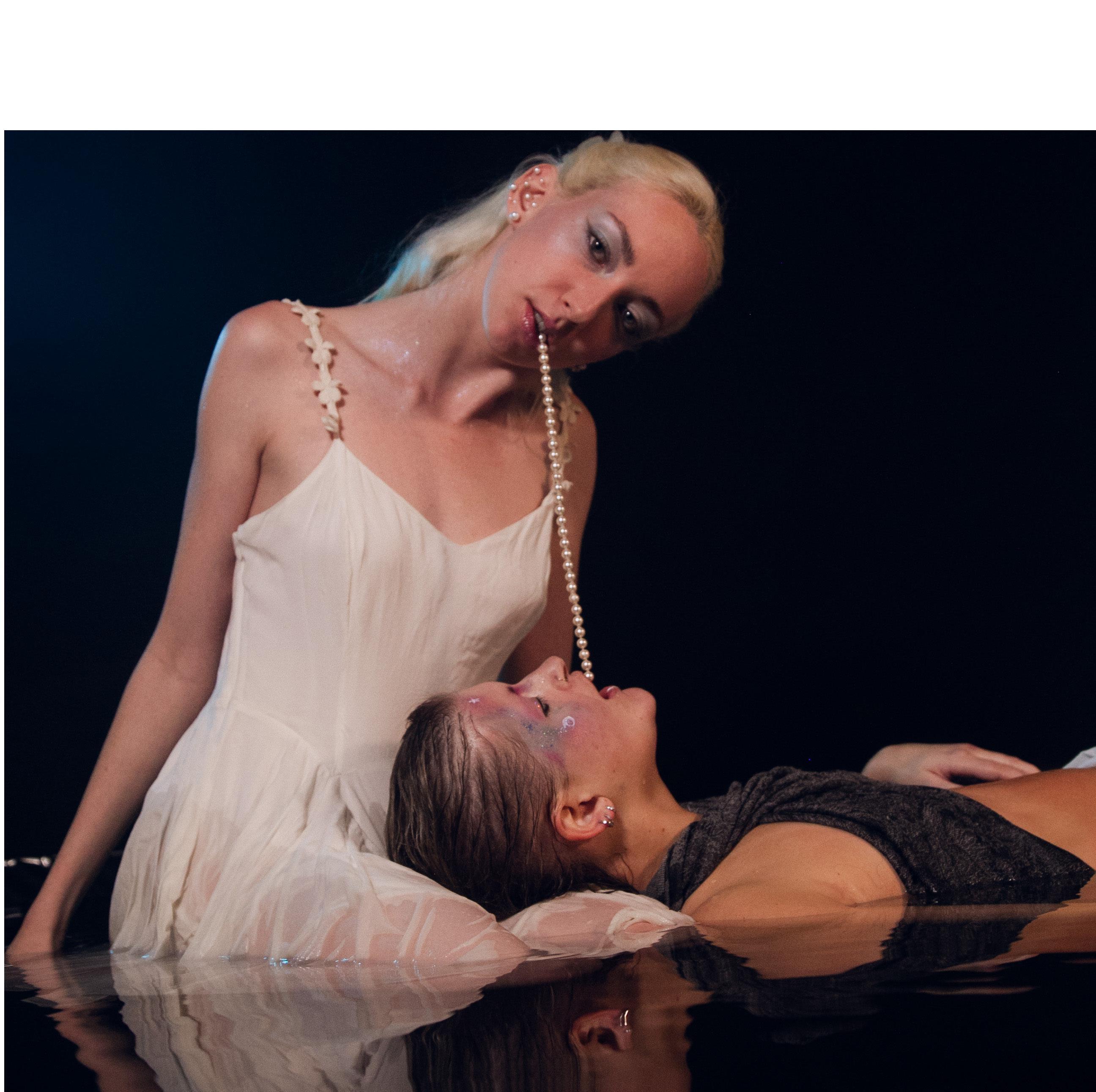
As people across the world become more aware of the impacts of their actions, we are seeing improvements in sustainability, eco-friendly packaging, and efforts to protect our planet. While our oceans are one of the more vulnerable ecosystems, we continue to benefit greatly from them. Iconic jewelry companies such as Tiffany & Co. have invested funding into research about the sustainable harvesting of pearls.
There are two different types of pearls that are used for commercial grade products. Mussels yield freshwater pearls, and clams yield saltwater pearls. Saltwater pearls are much more coveted, but the standards in judging desirability vary based on luster and shape. Sustainably raised clams can live eight to ten years in age and produce up to three pearls in their lifetime. Each saltwater pearl can take two to five years to fully develop.
Originally, pearls were highly valued, and thus, highly sought after. Overfishing reduced the oyster population and there was a decrease in the pearl trade as the supply was depleted. With less than 1% chance of natural production, vendors rely on farmed pearls.
Sustainability efforts to protect saltwater pearls have increased. With these efforts pearl farmers work to put clams in ideal conditions to filter for pearls. Oysters have many benefits and can even help to filter polluted water, but over polluted water impacts farmers’ bottom lines and oysters’ health. The more investment that farmers put into the health of their clams, the higher quality pearls they will yield
because optimum growing conditions are encouraged. These farms can benefit oceanic ecosystems as well. Fishing is generally prohibited around oyster farms, which provides sanctuary for fish. Fish can feed off of the debris on oyster shells helping to maintain cleanliness in a symbiotic relationship.
A major shift in pearl production took place when pearl producers focused on removing a clam or mussel’s pearl without harming them. Specialized knives help pearl farmers to obtain the pearl without harming the oyster, as opposed to forcing the oyster open. By focusing on careful extraction, clams and mussels can continue to produce gemstones that add iconic touches to looks for every occasion.
While pearl harvesting has improved, human activity continues to have an impact. Natural weather events can damage pearl farms, and we see an uptick in natural disasters with the impacts of climate change becoming more apparent. Additionally, plastic pollution in the ocean reduces the quality of water and lessens the quality of pearls. There are many qualifications necessary to ensure sustainable pearl farming. Creating pearls can be harmful to the oysters, and disease can wipe out a dense oyster population similar to any farming practice.
The bottom line is, like most products on the market, if done correctly, saltwater oyster farming can be both beneficial for humans and reduce the harm caused to the environment. This is not to say that you should throw out your pearls if you don’t know how or where they were sourced. There are many affordable ways to look for pearls and support sustainable practices, one of the major aspects of sustainability is using what we already have. Go through your family’s belongings, thrift, and upcycle! It doesn’t take a budget to be resourceful, and it doesn’t take harming ecosystems for pearls to continue to shine as a part of the fashion industry.
37
Photo by Tylyn King
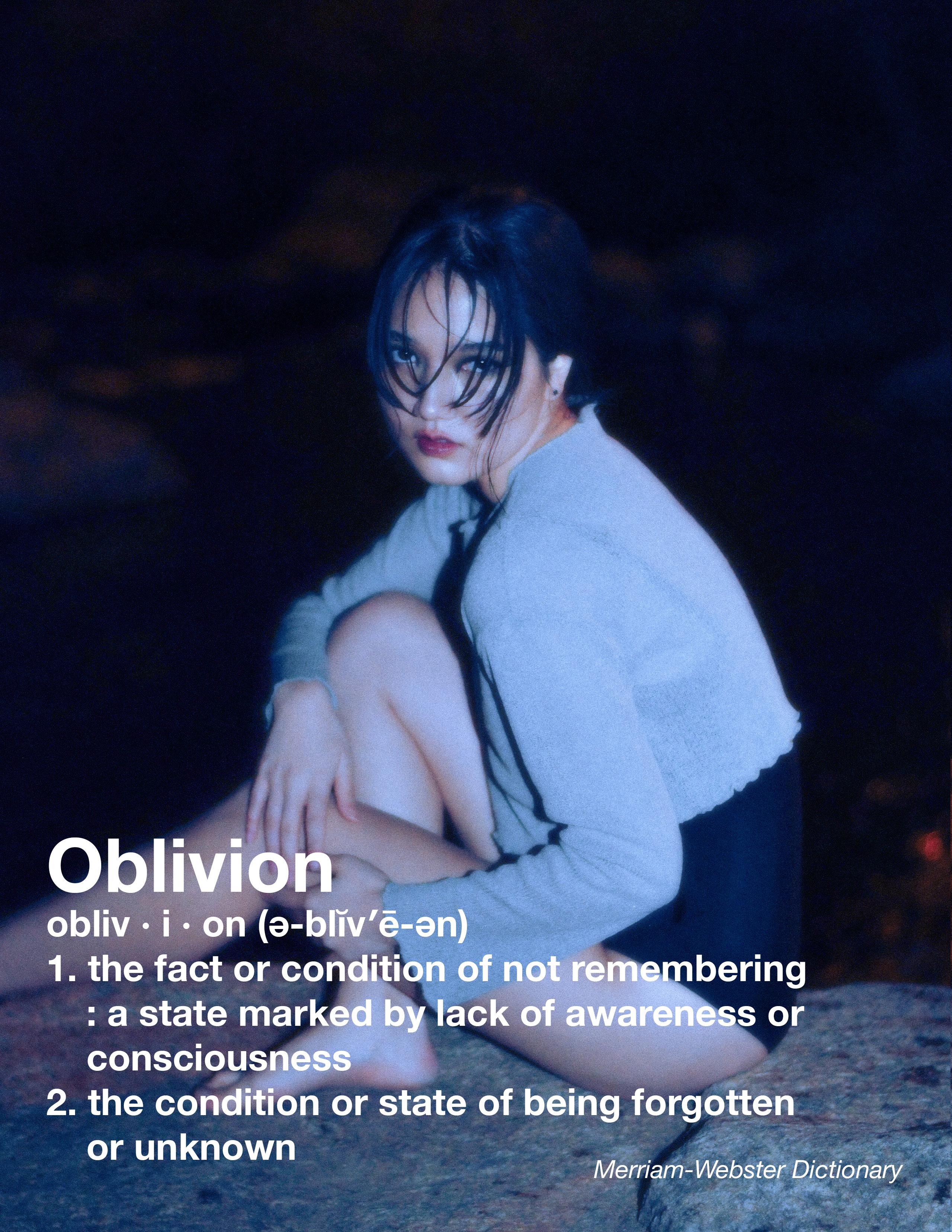
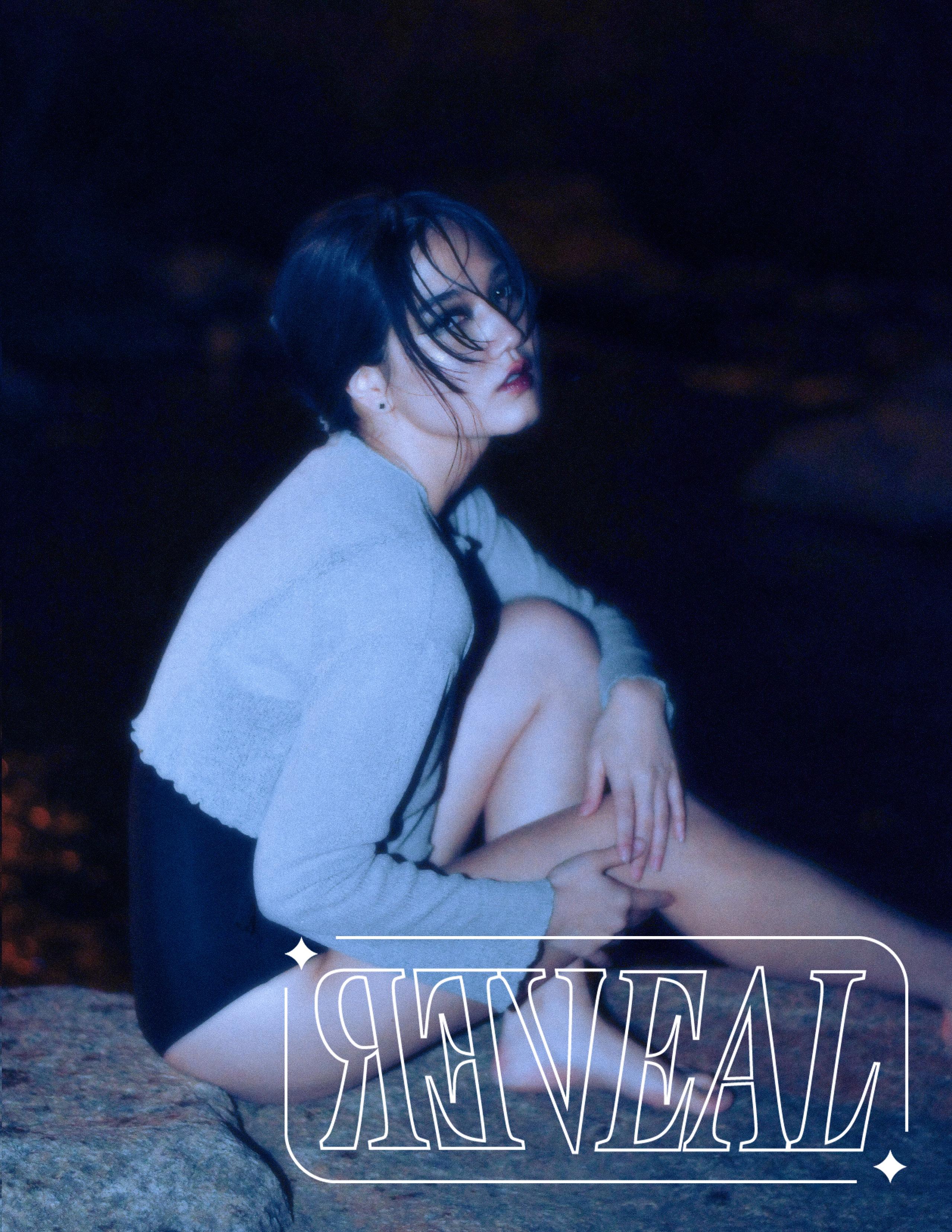 Photos by Sebastian Arnavat
Photos by Sebastian Arnavat
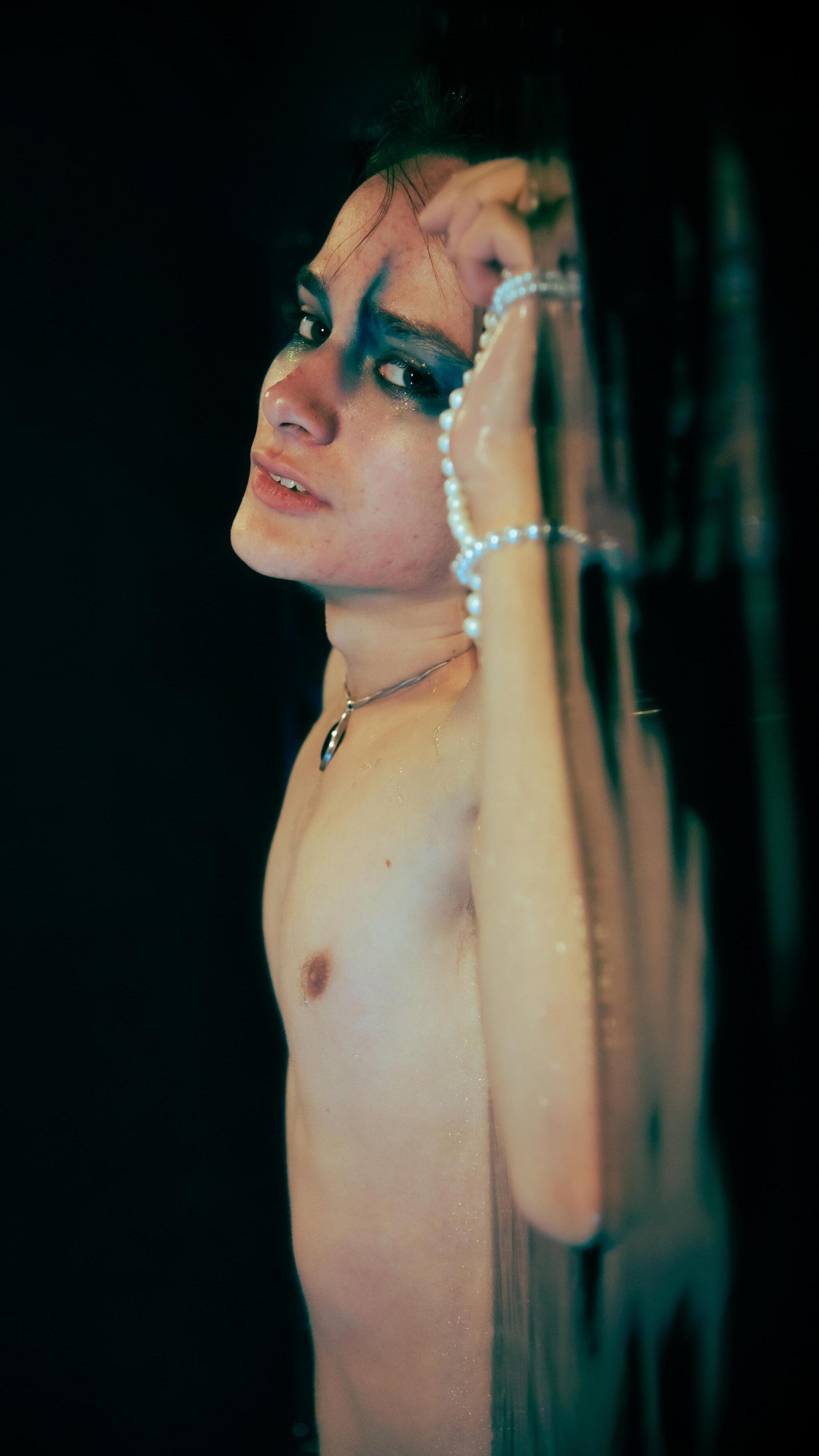
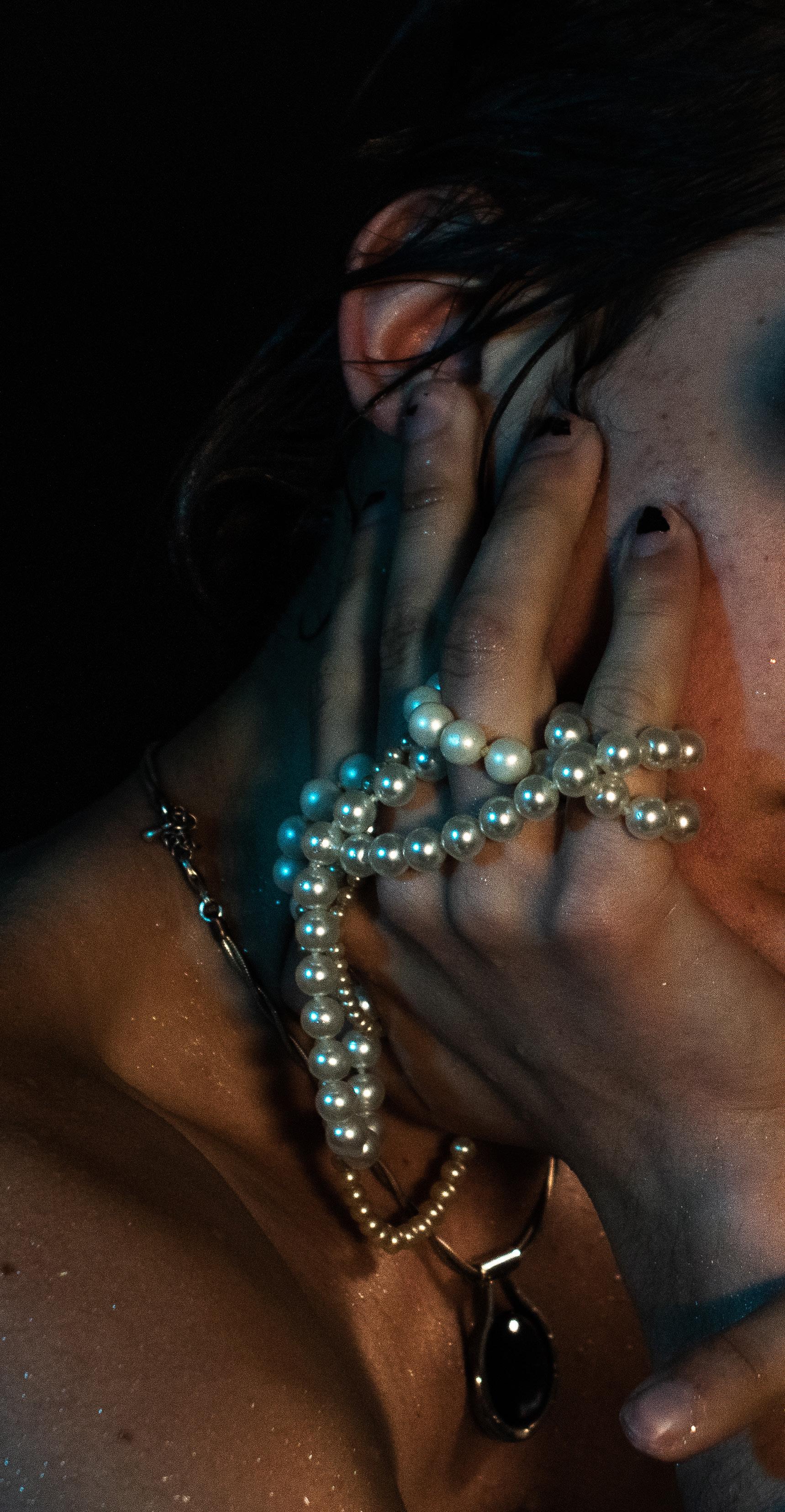
 Photos by Sarah Karbachinskiy and Evan Wang
Photos by Sarah Karbachinskiy and Evan Wang
Julia Belian
Aspen Pasikov
Aidan Jones
Edwin McArthur
Amelie Daberkow
Mia DiNorcia
Maya Nissenbaum
Anna Longval
Kyle Kim
Evan Wang
Cristian Abood
Gia Boudreau
Tylyn King
Matthew Batchelder
Garrett Botsch
Ashlyn Lee
Anya Keena
Abigail Wiegmann
Grace Thorburn
Sam Schechterman
Kohanna McCrary
Hallie Hannum
Kenzie Hale
Isaac Saegesser
Rhett Kaya
Our Team
Editor-in-Chief Deputy Editor Creative Director
Chief Graphic Designer Chief Layout Designer Fashion Director
Fashion Director; Make-Up Director Fashion Curator Photography Director Photography Director
Photography Editor Photography Editor Photography Editor; Director of Set & Prop Design Photography Instructor

Modeling Director Modeling Director
Modeling Director
Diversity and Inclusion Director; Journalism Director; Copy Editor Journalism Editor; Copy Editor Blog Director Music Director
Hair and Make-Up Director Hair Director Marketing Director Social Media Manager
Models Featured
Toni Alfaro
Ben Bridy
Gabriella Cardinale
Jackson Champagne
Mia DiNorcia
Krysta Douglas
Olivia Gewanter
Marly Holsman
Ashlyn Lee
Anna Longval
Edgar Lozano
Libby Nordvold
Olivia Overton
Rachel Shea
Emily Smith
Taylor Stribrny
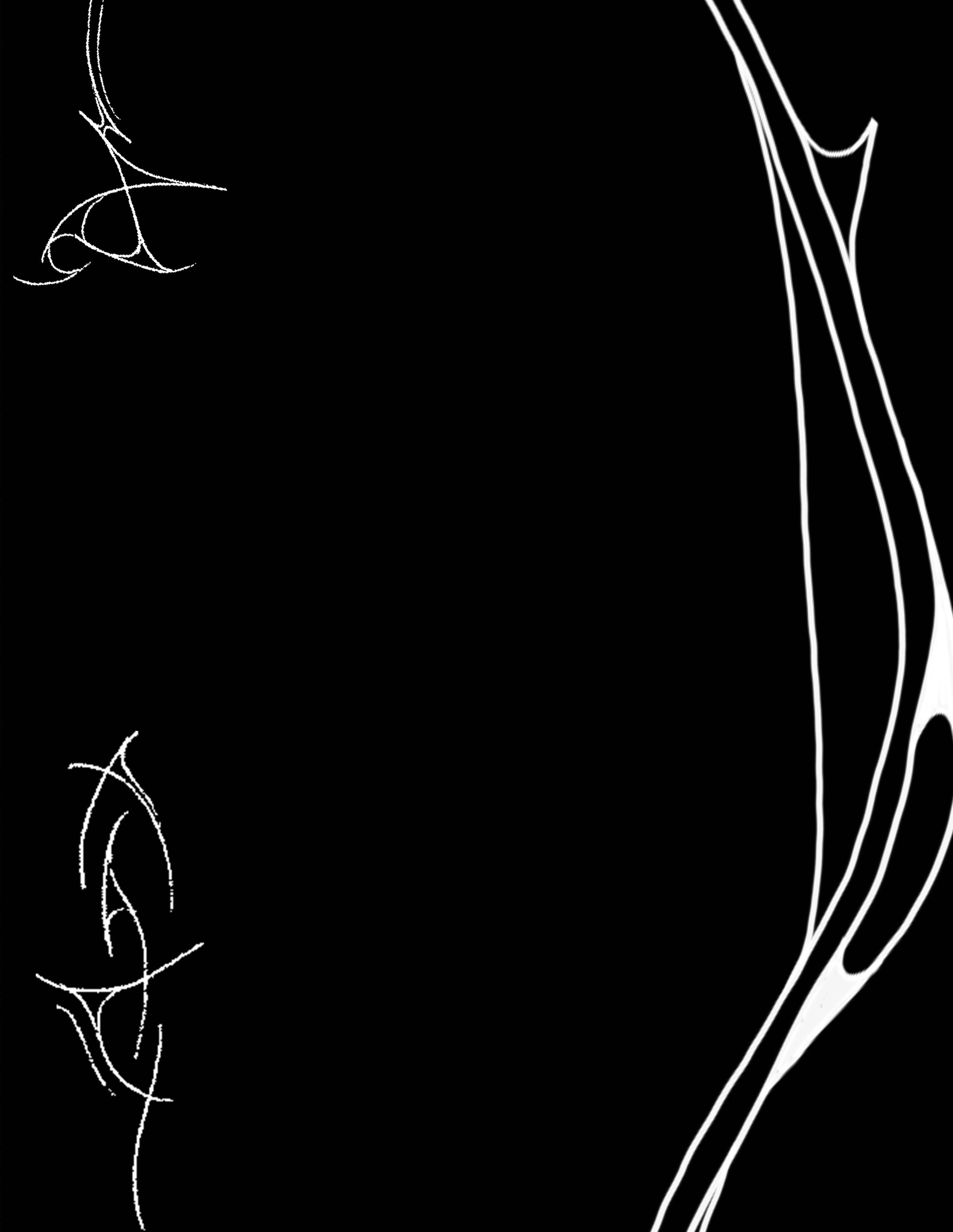
Featured
Arnavat
Batilo
Photographers
Sebastian
Andrew
Kim
Gia Boudreau Sarah Karbachinskiy Krister Killinger Tylyn King Kyle
Izzy Holsman Katie O’Leary Evan Wang Camron White
Featured
Jones
Look
Baumann
Daberkow
Hammond
and Makeup
Featured Jack Benson Olivia Gewanter
Hale
Leighton Stylists Featured Mia DiNorcia Olivia Gewanter
Rauzi Emily Smith
Graphic Designers
Aidan
Macy
Edwin McArthur Maya
Amelie
Mack
Hair
Artists
Kenzie
Lexie
Marissa



 Photo by Camron White
Photo by Camron White

 Photo by Camron White
Photo by Camron White

 Photo by Andrew Batilo
Photo by Andrew Batilo





 Photo by Tylyn King
Photo by Tylyn King
 Photos by Izzy Holsman
Photos by Izzy Holsman
 Hallie Hannum
Hallie Hannum


 Photos by Katie O’Leary
Photos by Katie O’Leary
 Photos by Camron White
Photos by Camron White





 Photos by Kyle Kim
Photos by Kyle Kim


 Photos by Sebastian Arnavat
Kohanna McCrary
Photos by Sebastian Arnavat
Kohanna McCrary


 Photo by Krister Killinger
Photo by Krister Killinger

 Photos by Sebastian Arnavat
Photos by Sebastian Arnavat



 Photo by Camron White
Photo by Camron White

 Photo by Camron White
Photo by Camron White

 Photo by Camron White
Photo by Camron White

 Photos by Evan Wang
Photos by Evan Wang

 Photo by Gia Boudreau
Photo by Gia Boudreau
 Sam Schechterman
Sam Schechterman


 Photos by Sebastian Arnavat
Photos by Sebastian Arnavat


 Photos by Sarah Karbachinskiy and Evan Wang
Photos by Sarah Karbachinskiy and Evan Wang







